GASTRONOMY OF TOMORROW
Locavore, innovative and gastronomic cuisine: Lausanne, a place to discover new flavors. Page 40
LAUSANNE: THE CITY IN ELISABETH GERRITZEN’S HEART Page 30



Locavore, innovative and gastronomic cuisine: Lausanne, a place to discover new flavors. Page 40
LAUSANNE: THE CITY IN ELISABETH GERRITZEN’S HEART Page 30


“The way to someone’s heart is through their stomach”, as the old saying goes. In Lausanne, there is no doubt that it’s true – its broad range of culinary options, from the modern to the traditional, is a delight for the senses. The city is bursting with local food and small producers. The EHL – ranked as the best hospitality management school in the world – means it’s also full of innovations from alumni who have opened numerous restaurants. A city of 160 nationalities, Lausanne offers amazing opportunities to take your tastebuds on a round-the-world trip. “And there are more good restaurants per square kilometre in the region than anywhere else”, as food critic Knut Schwander points out. We’re celebrating this wealth of taste in this edition’s feature (page 40).
Environmental responsibility is a key ingredient of every part of the City – even in the laying of its paving stones, an age-old trade that’s central to Lausanne’s renovations (page 24). And that’s just for starters: second-hand shops are thriving, upcycling is all the rage (page 6), and making objects that last is a key focus at Ateliers du Nord, an internationally renowned design studio (page 34).
Also on the program, two members of the Lausanners community share their insider tips with us (page 32). We dive into the childhood memories - between Lausanne and the nearby ski slopes - of Elisabeth Gerritzen, Freeride World Champion (page 30). We discover the little-known neighbourhood of Les Faverges thanks to The Island (“L’Îlot”), a feature-length film from director Tizian Büchi, the winner of the 53rd Visions du Réel film festival (page 22). Plus cheesemaker Duttweiler reveals the secrets to the Gruyère caramel that’s been sold at Lausanne market for almost four decades (page 23).
So dig into the 10th issue of the Lausanner and bon appétit!

Skiing in the streets of Lausanne? It happened before on Sunday 17 February 1985. That morning, the people of Lausanne awoke to discover their city buried under a 60 cm blanket of snow. Their response was to turn to their skis – both to get around, as seen here in Place Bel-Air, and to hurtle down the city’s hills. In 2010, 2017 and 2018 in particular, heavy snowfall meant a few enthusiasts were able to ski down the Petit-Chêne, but the 1985 snowfall record has not yet been matched.
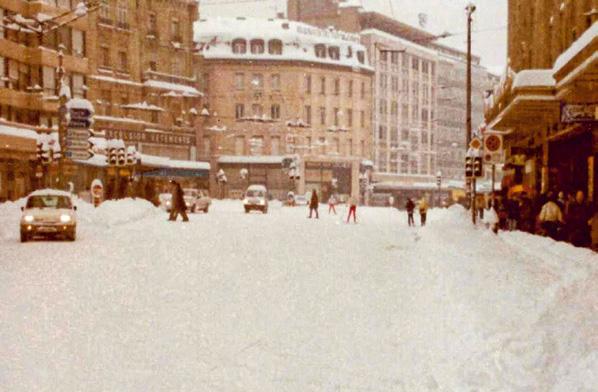
Editorial:
Direction: Steeve Pasche
Editorial production: Large Network Graphics: Saentys
Editorial Manager: Trinidad Barleycorn, Large Network Production: Nathalie Roux/Marie-Laure Beausoleil
Writing: Trinidad Barleycorn, Alice Caspary, Stéphanie de Roguin, Erik Freudenreich, Laurent Grabet, Pierre Grosjean, Leandra Patané
Photography: Sylvie Bazzanella (p. 2) – François Wavre (p. 5, 24, 35, 38) –Les Patronnes (p. 6) – Daniela Tonatiuh (p. 9) – Noura Gauper (p. 10) –DR (p. 12, 13, 14, 27, 47, 49, 51) – Emmanuel Denis (p. 14) – La Galette (p. 14) – Trinidad Barleycorn (p. 15, 23) – The book of days: a miscellany of popular antiquities (p. 16) – Fehlmann Architectes (p. 21) – Tizian Büchi (p. 22) – Frédéric Lemail (p. 26) – Emmanuel Chandelier (p. 26) –Fuzheado (p. 27) – Seroussi Presse (p. 27) – Pierre–Yves Massot (p. 27) –Mathilda Olmi (p. 28) – Diana Tinoco (p. 28) – Laura Ces (p. 28) – Aline Paley (p. 28) – Guillaume Megevand (p. 32–33) – AdN Cahen (p. 36, 37) – Thierry Zufferey (p. 36) – Nicolas Schopfer (p. 42) – Cynthia Mai Ammann (p. 44) – Matthieu Crozier (p. 44) – Cédric Raccio (p. 44) –Cocktail Sandwich (p. 44) – Dairy Mambetov (p. 47) – FEDIGIOIA (p. 47) – Carlo de Rosa (p.50) – Cécile Gretsch (p. 52, 54) – Alice Caspary (p. 53, 54) – Vaud Promotion (p. 54)
© Photos Lausanne Tourisme – LT/Laurent Kaczor (p. 59, 60, 61, 63, 65, 68, 69, 73, 77, 80) – LT/diapo.ch (p. 59, 60, 67, 68, 69, 72, 73, 74, 80) –
Schweiz Tourismus/Giglio Pasqua (p. 60, 65) – P. Waterton (p. 65, 76) –LT/Maxime Genoud (p. 61) – Christoph Schuerpf (p. 61) – Catherine Leutenegger Photography (p. 61) – Switzerland Tourism/Andre Meier (p. 63, 68) – CIO/Lydie Nesvadba (p. 65) – William Gammuto sarl (p. 67) – Sarah Jacquemet (p. 69) – LT/Julien Dorol (p. 69, 79) –Swizterland Tourism/Lorenz Richard (p. 73) – F. Beaud-Cedotec (p. 73) – Giulia Cremonese (p. 78)
Image search: Sabrine Élias, Large Network Cover: Knut Schwander photographed by Nicolas Schopfer
Acknowledgements: The Lausanner warmly thanks the Nabi team for its precious help during the cover photo shoot, in particular Delphine Veillon, Johans Valdivia and Bruno Andrade. Advertising: Michel Chevallaz +41 79 213 53 15
Printing: Gremper SA, Basel Available in French and English Writing, administration and announcements: Lausanne Tourisme Av. de Rhodanie 2 Case postale 975 CH-1001 Lausanne +41 21 613 73 73 www.lausanne-tourisme.ch e-mail: direction@lausanne-tourisme.ch
With the support of
The Lausanner, a tourist welcome and information magazine about life in Lausanne Lausanne Tourisme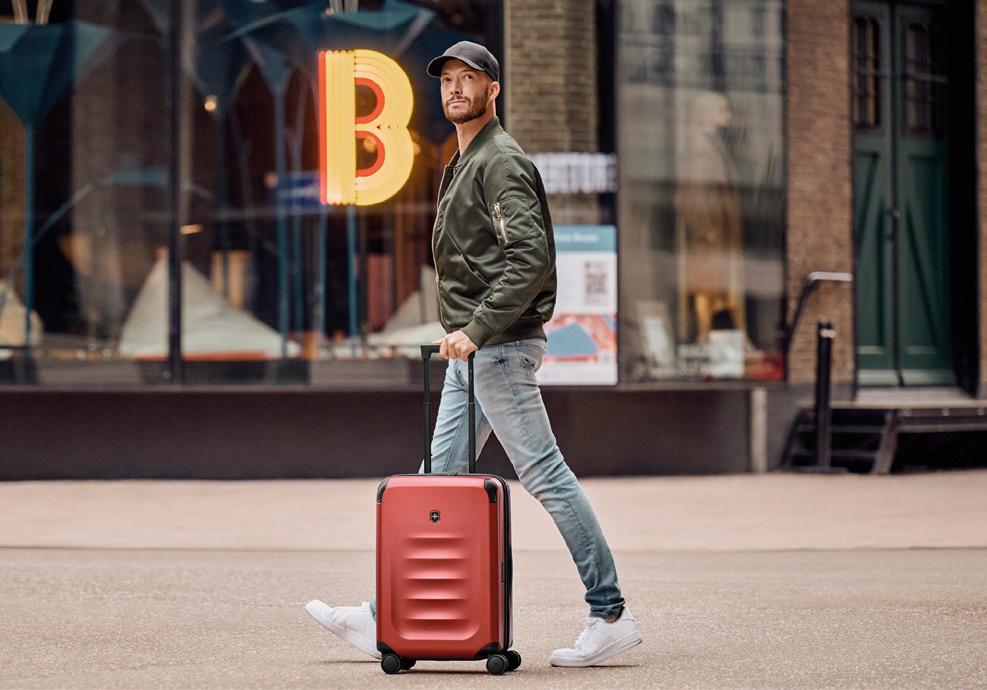
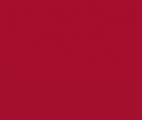
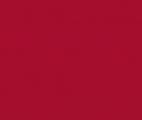
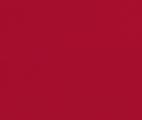

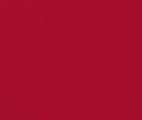
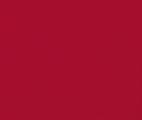
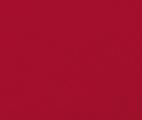









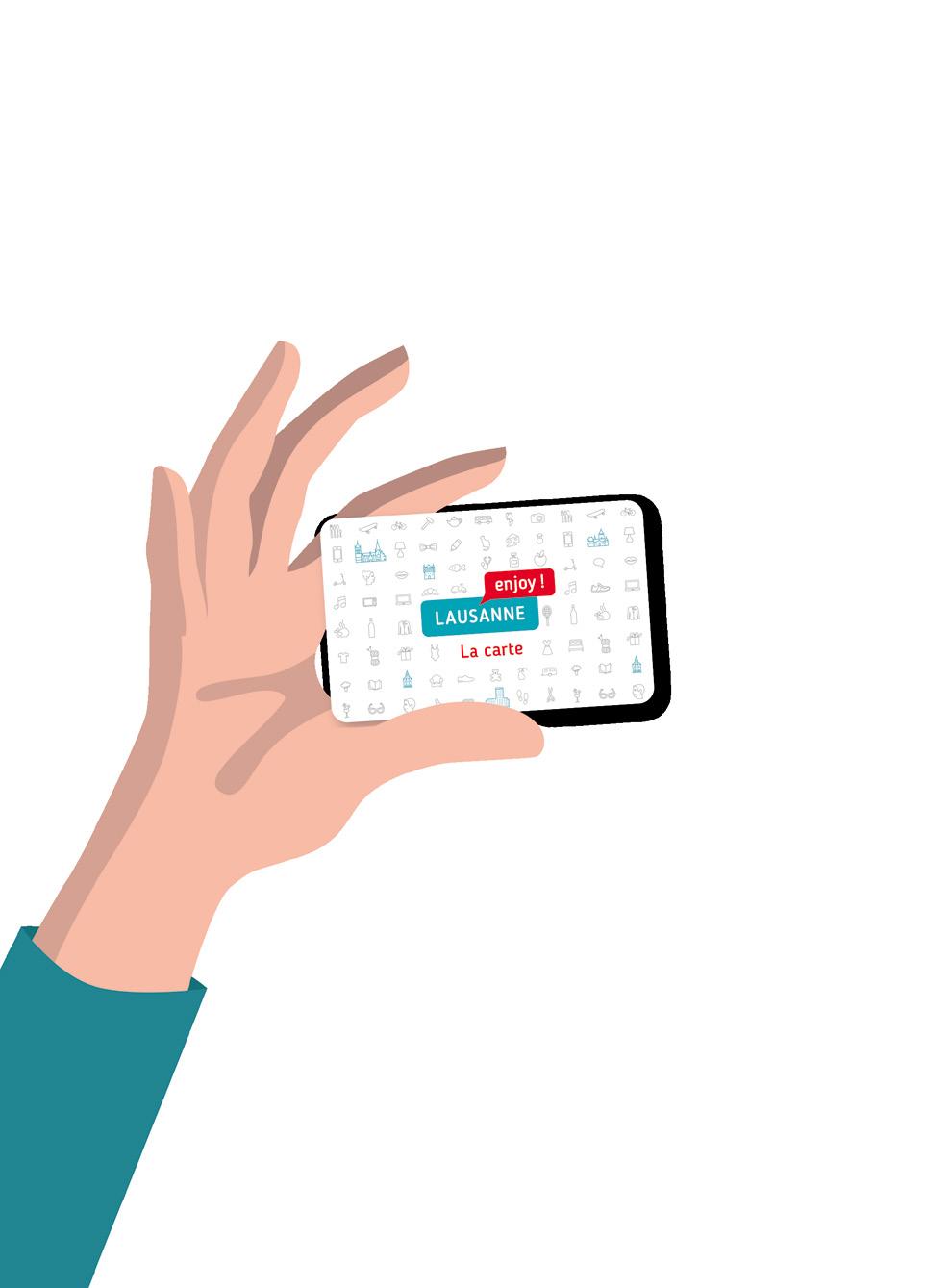
Second-hand fashion in Lausanne Page 6
Top new spots Page 13
Between novel-tea and tradition Page 15 Animals tried as humans Page 18
Highly prized traditional expertise Page 24
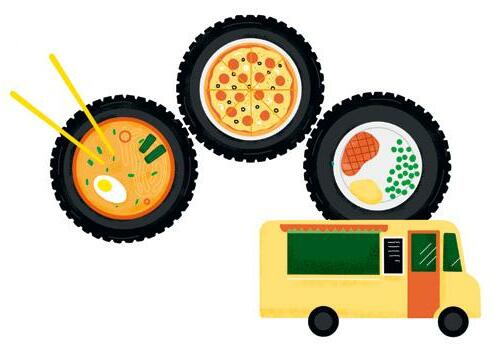
Antoine Cahen, the man who designs Nespresso machines Page 34
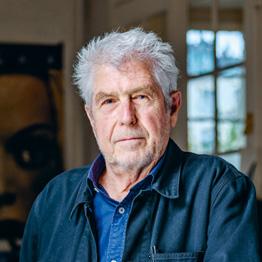
Local food, innovative concepts, Michelin-starred restaurants, food trucks and world food – Vaud’s capital is reinventing gastronomy Page 40
Looking for something unique Page 52
Lausanne locales that are not to be missed Page 58
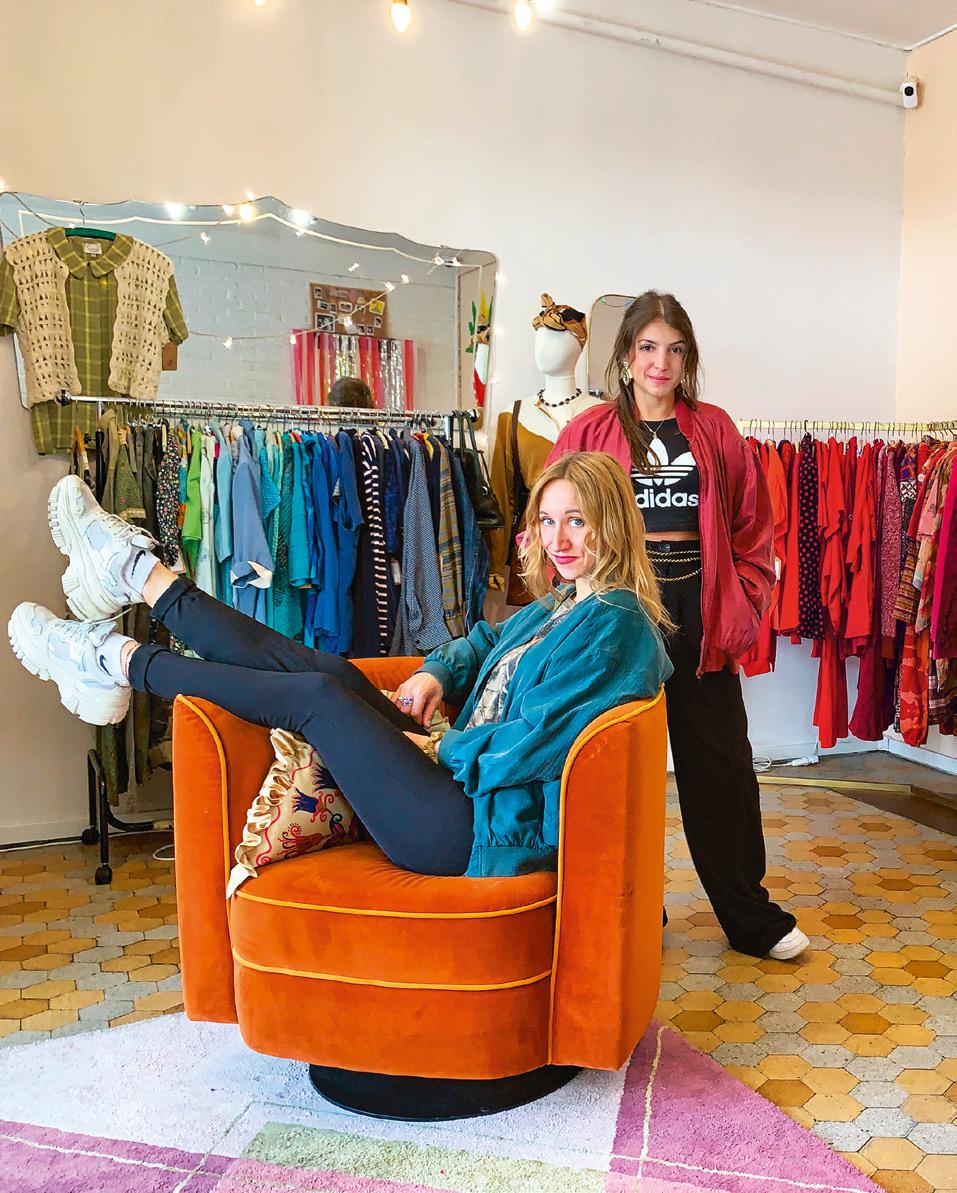
Stepping inside Chabada Vintage is like being immediately thrust back into another era. You can marvel at the shimmering colours and textures of dresses dating from the 1950s to the 1990s. Images flood your mind of early rock ‘n’ roll and disco parties. And to top it all off, you can also find bags from the same periods, as well as books on fashion.
Located on Rue Cheneau-de-Bourg, Chabada Vintage is far from the only vintage fashion shop in Lausanne. Les Patronnes opened in 2017 and is run by Morgane and Melodia. Both trained decorators and avid second-hand shoppers, they set out with a specific idea in mind: to freshen up the image of second-hand fashion and show that it can even be hip. With Throwback Vintage, Fripsquare, Le Dressing, Finest Vintage, La Louve Friperie, and more, vintage shops are popping up everywhere. The Vaud capital now boasts at least 10 addresses (see box). And there is no lack of demand.
Some love quality clothes, while others are into retro fashion or are looking for alternatives to global clothing brands. But another kind of motivation has emerged. In our times of climate and environmental emergency, some believe we must start reusing objects instead of constantly buying new ones –saving natural resources and reducing our waste.
“There is definitely a key underlying trend, which has developed over the past 20 years. But second-hand clothes have actually always been a thing. Marie-Antoinette gave away her old dresses to the people, which is why very few things that belonged to her have been found,” says French sociologist Frédéric Godart, author of the book Sociologie de la mode. And the expert recalls the tradition of charity that long prevailed around second-hand clothes, with a degree of taboo due to the fear of a lack of hygiene. →

In the Vaud capital, more and more shops are offering second-hand products. Between love for vintage items and environmental consciousness, these outlets have no problem drawing customers. But what are their limits?
These days, second-hand is a completely different story. Pieces are carefully selected. Muriel, who runs Chabada Vintage, reminds us that vintage is a shape, cut or style that marked fashion at a certain period. Some shops specialise, for example, in haute couture or streetwear.
In some cases, second-hand fashion does not even require a physical store. One such example is Teorem, an app created by Charlotte Henry that encourages people to buy and sell clothes to give them a second life. Fripsquare is also mostly an e-shop. But a small showroom on Avenue Dapples is available for those who prefer to touch the fabrics rather than simply look at them on a screen.
Frédéric Godart says of the vintage movement, “It’s a recent trend that also involves a taboo. For a long time, wearing old styles was by definition considered bad taste. Only in the late 20th century did people start redefining certain styles from the past. Now 90s styles are becoming a reference. All this also stems from the creativity crisis in fashion.”
Reusing clothes makes sense, because the clothing and textile industry is a huge contributor to global greenhouse gas emissions. WWF Switzerland reports that the sector produces an estimated 1.7 billion tonnes of CO2 per year. This makes the textile industry one of the world’s largest polluters, pegged somewhere between second and fifth place, depending on the study.
The manager of Chabada Vintage has changed her point of view after 14 years in business. “I have become much more sensitive to the circular economy ethic. And all the clothes in my shop come from
Muriel, owner of Chabada Vintage
the region, either second-hand dealers or individuals. It makes no sense to me to bring in vintage clothes from abroad, due to the transport that it requires.”
And about the issue of reselling used clothes that in the past would have gone to charity, Frédéric Godart says, “Following a study, a friend of mine who works in sustainable fashion came to the conclusion that there is enough textile on the planet today for two generations, i.e. about 40 years. Now, sustainable fashion experts will tell you that second-hand goods do not stop the production cycle, but maintain it. You still have to produce new clothes to be able to sell used ones. Basically, it just shifts the problem elsewhere. They believe that the only solution is to make do with less, which means reducing consumption and repairing what you have.” →
“All the clothes in my shop come from the region, either second-hand dealers or individuals.”
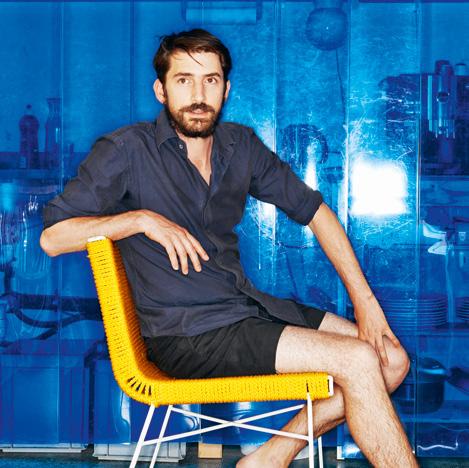
Designer Adrien Rovero set up his own studio in Renens in 2006, and today his clients include Hermès, Atelier Pfister and the Centre Pompidou. “It’s very on trend and also very urgent, but I’ve always been about taking an object’s environmental impact into account right from the design stage,” he says. One example is from about 15 years ago, when he designed a moulded wooden stool to compete with plastic stools. “I was quite shocked, during a trip to India, to see all these stools on the beaches, broken, and just left there. It’s remarkable how plastic is unbeatable in terms of price, but sometimes you have to be bold and look a bit beyond that.” The stool never went beyond the prototype stage, as the market was probably not ready yet, nor were consumers.
However, things have changed. “There has been a real, consistent and positive
evolution,” the artist says. Having recently designed a case for a watch brand, Adrien Rovero wants to make sure that all the components are upcycled. “I get the feeling from the people I talk to that they really want to contribute to this project.”
The designer nevertheless urges us to use discernment when it comes to greenwashing. As an example, he mentions a tube of toothpaste recently released to market with a bamboo cap. But the bamboo covers a cap made of... plastic. “You always have to look carefully at what’s behind product claims of environmental consciousness. It’s hard to assess an object’s real impact, because you have to consider its entire life cycle. And don’t get hung up on the price – be willing to pay a bit more money for a product if it has a lower environmental impact than another.”
Definition of “upcycling”: renovating an existing item to give it a new appearance, or even a new use.
Adrien RoveroIn their workshop below the shop, Laboratoi/RE creates fashion pieces produced in an environmentally conscious, responsible and transparent way, reusing existing fabric and resources.
Another way to save resources and cut waste in production is “upcycling”. Never heard of it? It involves renovating an existing item to give it a new appearance, or even a new use. At her shop on Rue du Simplon, Atelier Sonja T., Sonja Trachsel produces and sells all sorts of bags – some of which have been created from advertising banners – and novel objects: gift wrapping paper made from bits of paper maps, bottle openers made with parts from bicycle frames, and notebooks made from vinyl records and recovered circuit boards. All manufactured in sheltered workshops in Switzerland. Established since 2004, the designer has noted a stark uptick in interest in upcycling. “My clientele is very diverse. Men and women, ages ranging from 7 to 77, sometimes a little older! When I started out, I was very much alone. Now, several artists are starting to produce and sell upcycled objects”. Laboratoi/RE, located at
Rue de la Mercercie 16, also offers upcycled clothing, accessories and jewellery, and has made a name for itself in the Lausanne landscape in its nearly 20 years in business.
Lausanne is a hotbed for creativity. The city is the proud home of Lausanne University of Art and Design (ECAL –École cantonale d’art de Lausanne), which has sparked the creative spirit of entire generations of students. Two years ago, ECAL introduced a specialised course in sustainable design, and since the beginning of this school year in September, sustainability has been included as an option in its professional development programme, the CAS (Certificate of Advanced Studies). One ECAL graduate, Adrien Rovero, is now a star of international design (see page 9) and also teaches at the school. “We are seeing more and more dissertation research on the reuse of materials.
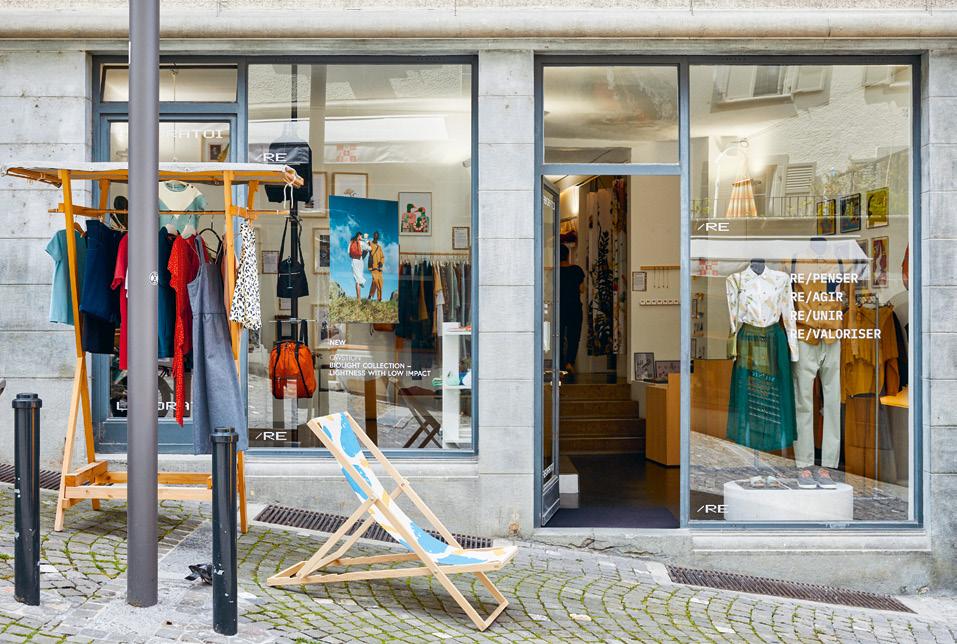
For example, one student worked on the impact of mattresses, which use large amounts of material and need to be changed about every 10 years. She came up with a solution that separates the parts of the mattress so that they can be reused or disposed of better.”
As the capital of the canton of Vaud, Lausanne has long attracted people from neighbouring regions, who come to buy all sorts of goods. Is it now the city’s role to set an example of responsible consumption in the face of the current climate and environmental emergency?
To promote businesses active in this segment, the City of Lausanne teamed up with the Swiss consumer association Fédération romande des consommateurs (FRC) to set up the website Lausannereutilise in 2018. The site features vintage fashion shops and other types of secondhand stores covering a wide range of items. Three years earlier, Lausanne-repare was created, which lists the city’s shops and other organisations where items can be repaired. These two sites have since been united on the platform Lausanne-conso-durable,
Chabada Vintage Rue Cheneaude-Bourg 4 Authentic 1950s to 1990s vintage.
Throwback Vintage Av. de Beaulieu 7 Mostly 1990s.
Fripsquare Av. Édouard Dapples 15 bis Elegant and modern slow fashion.
Le Dressing Av. des Alpes 3 High-end for women.
Finest Vintage Rue Caroline 5 For women and men, 1930s to 1970s.
Les Patronnes
Rue du Valentin 43 Name brand and major chain items.
La Louve Friperie Rue de la Louve 3 Mainly streetwear.
Atelier Sonja T. Rue du Simplon 9 Upcycled bags and accessories.
Laboratoi/RE Rue de la Mercerie 16 Upcycled clothes, accessories and jewellery.
and in early 2020, they were joined by the RestoBox Lausanne programme, which urges restaurant owners and individuals to use only reusable containers for takeaway meals.
“These tools are not intended solely to raise awareness about more sustainable consumption, but also to encourage people to take concrete action in their everyday lives by adopting more sustainable production and consumption systems,” says Samira Dubart, sustainable development delegate for the City of Lausanne. The initiative was inspired by a similar platform launched in Geneva, Genève-repare. In turn, Lausanne-consodurable is now leading other cities to promote this circular economy. A snowball effect that will do good. ■
“We are seeing more and more dissertation research on the reuse of materials.”
Adrien Rovero, designer
The Vaud capital offers a wide array of original activities that can be enjoyed regardless of the weather! Here are a few of our favourites.
You fancy playing a Viking, Robin Hood or a painter for a day? Then the Lausanne region is the place for you! The city is full of ways to step outside the box and enjoy unique experiences.
Try an original sport at Axers, where people as young as 10 can learn the basics of axe throwing of the legendary Norse pirates. Axers is the largest centre in Switzerland dedicated to this discipline and offers activities including mini games in a wooden, rustic setting.
The World Archery Excellence Centre brings an air of Sherwood Forest to the heights of Lausanne. You can learn archery, just like Robin Hood. The centre welcomes the best archers in the world, but is also open to any amateur aged 8 and older. Its indoor and outdoor facilities let you shoot in any weather, and includes a gym and sauna.
At Colore ta vie, you can let go by expressing your creativity.

The Jump Spot is ideal for letting off steam. Switzerland’s largest park of its kind has 150 trampolines, where you can bounce away from age 7 and up. The 3,300 m2 space offers other original activities, including an interactive wall, climbing wall, obstacle course and agility course.
In Saint-Sulpice, Bubble Foot will also appeal to fans of unconventional sports. Each in their own bubble –a transparent, inflated sphere surrounding the body except for the legs – players age 10 and over, cushioned by the unusual padding, can give it their all in a high-impact match. Games are in 10-minute sessions, played on grass or indoors depending on weather.
Bringing the same rush of adrenaline, but in a completely different atmosphere, Cobalt
Axers axers.net
World Archery Excellence Centre worldarcherycentre.org
The Jump Spot thejumpspot.ch
Project turns video games into real-life action. This paintball centre aims to develop players’ tactical skills, sense of exploration and team spirit. Equipped with a touchscreen device listing the objectives, team members can earn points to recover from paintball hits, or unlock special weapons and vehicles. Cobalt’s brand-new concept, Xron, is a unique electric motorcycle race track in Switzerland, open to speed-lovers aged 14 and up.
And for those more akin to releasing their emotions through artistic creativity, head for Colore ta vie. Participants are given a variety of objects – boxing gloves, paint cans and ropes – to create a work of art. Once dry, the 1.6 m x 1 m canvas is given to its creators to take home as a colourful souvenir of their experience.
Swiss Bubble Foot swissbubblefootball.com
Cobalt Project cobaltproject.com Colore ta vie colore-ta-vie.com
Bondi Empanadas whisks you away on a gourmet getaway to Argentina, right in the Garages du Flon. The warm stuffed dough pockets take centre stage here. Many of the empanadas are vegetarian or even vegan, ready for dipping in Argentina’s famous chimichurri sauce. They are served with a beer from the Brasserie du Château, a cocktail or a glass of vibrant Swiss or Argentinian wine. You can sit inside on a bar stool in the black and white décor or outside on the pedestrian street.
Bondi Empanadas
Rue des Côtes-de-Montbenon 5, Lausanne bondiempanadas.ch
At the foot of the Coop de Grancy shopping centre is Hungry Bear Food, part of the Sleepy Bear Coffee Shop chain. The owners’ aim is to offer high-end cuisine that is full of surprises in a home-like atmosphere. Large tables and cosy armchairs create a friendly ambiance, inviting you to settle in. A spacious terrace with trees allows customers to enjoy the calm of the inner courtyard. The menu showcases local products, such as the creamy burrata from Mozza’Fiato, made in Cuarnens (VD), Valais Aperol, and exclusively Swiss wines.
Hungry Bear Food Rue du Simplon 3, Lausanne hungrybearfood.ch
At Hungry Bear Food, the focus is on offering high-end cuisine in a friendly atmosphere

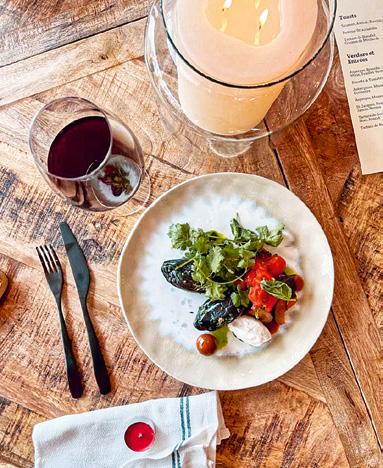 Jeremy Oberson (left) and Bautista Dahl Rocha, co-owners of Brasserie du Château, opened Bondi Empanadas in March 2022.
(pictured: spiced Hê aubergines)
Jeremy Oberson (left) and Bautista Dahl Rocha, co-owners of Brasserie du Château, opened Bondi Empanadas in March 2022.
(pictured: spiced Hê aubergines)
After being closed for several months, La Galette, the legendary bar in La Cité, reopened its doors at the end of April, and now offers several daily lunch dishes. When it’s time for an aperitif, cocktails and tapas are served along with a vast selection of beers from around the world, all of which you can enjoy inside or on the terrace. The Verboten cocktail, whose ingredients will forever be kept secret, is served in a 3 l pitcher to share. And to top it all off, La Galette now offers original evening events, such as stand-up comedy, giant pub quizzes, blind tests, singles parties, and sometimes even a DJ.
La Galette Rue Louis-Curtat 13, Lausanne lagalette.ch

After moving to Plateforme 10, the Photo Elysée bookshop and the mudac (Museum of Contemporary Design and Applied Arts) shop have now come together under one roof. The new retail space offers a wide range of books, magazines and objects related to photography, film, video, design and applied arts. Exhibition catalogues from both museums are also available. In addition, the venue regularly hosts signings and meetups with figures from the art world.
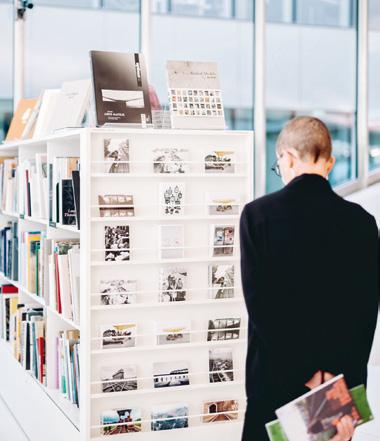
Photo Élysée and mudac shop Place de la Gare 17, Lausanne elysee.ch/librairie-boutique mudac.ch/boutique
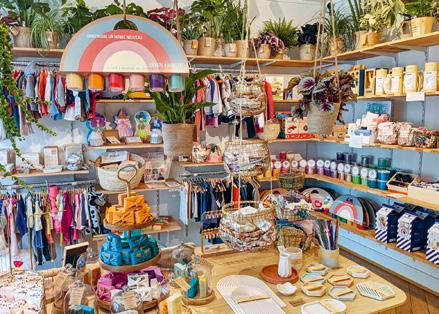
For nearly eight years, the La Chouquette blog has been touting the region’s best spots. In midAugust, La Chouquette also became an eco-friendly concept store in Lausanne. In the stylish, relaxed atmosphere, you can find fine foods, indoor plants and gift ideas. It also features a “children’s corner”, where you can sift through second-hand clothes as well as games and toys. High-quality, local craftsmanship guaranteed!
La Chouquette concept store Avenue de Rumine 4, Lausanne lachouquette.ch
The world’s second most commonly consumed drink after water, tea offers a fascinating wealth of flavours and is both energising and relaxing. Lausanne is home to many shops devoted to this much-loved beverage and in this issue four Lausanne residents share their favourites with us.
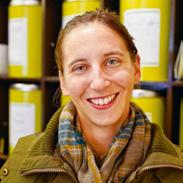
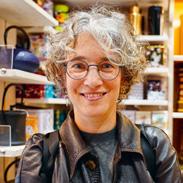
“I’ve been a customer of Saveur PimenThé for over 10 years. I love the smell of the shop and its snug décor. It makes you feel at home and the service and advice is second to none. I buy Earl Grey, green tea and jasmine, and I love their chai. From October, I also buy their Christmas teas, which are lovely to drink with family and friends. I also enjoy discovering other flavours. Here, for example, I’ve bought Night in Rio, a green flower tea. We’ve really enjoyed it as a cold drink this summer and we’re going to try it out as a hot drink. This is also a really good place to find great gifts, what with the speciality teas, coffees roasted on site and their mugs.”
Saveur PimenThé – saveurpimenthe.com Rue Madeleine 5, Lausanne
Pauline Nortier, 28,
“When I arrived from Paris a year and a half ago, I was looking for somewhere good to get tea. A friend told me about ThéTeaTee. She said that the owner was really nice, he gave fantastic advice, the teas were excellent and there was a huge selection to choose from. And it was all true! I try new flavours every time and I also buy teas as gifts. For myself, I buy green tea, which I find sweeter, and black tea for my kombucha. Today, I’ve chosen a Mille fleurs tea, a gunpowder tea, a matcha tea, a reinvigorating infusion, a China Sencha tea and a vanilla and bergamot rooibos.”
ThéTeaTee – theteatee.com Rue Enning 4, Lausanne
Arnaud
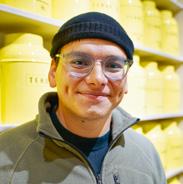
“I discovered Tekoe when I first started my studies, when I was looking for a coffee alternative. I find that tea, and maté in particular, is 10 times as energising. To drink at home, I’ve bought some maté and a green tea for the evenings. And often, in the mornings, I’ll buy a takeaway tea before taking the metro. If you bring your own cup, you get a discount. It’s an eco-friendly touch I really like! The shop offers a huge number of varieties and the staff are super friendly and give great advice. That’s something I really appreciate, because it helps me expand my knowledge.”
Tekoe – tekoe.com Rue Centrale 5 and Pl. de la Gare 9, Lausanne
Angie Decorges, 28,
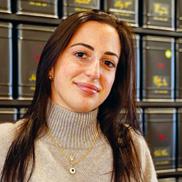
“I was a customer of Le Cercle du Thé in Nyon for over a decade, but as I live in Lausanne, this is more convenient now they’ve opened a branch here. I love their high-quality customer service and advice and I also like that they’re a family company and that you can sit in and enjoy a cup. I drink a lot of tea, especially in the evenings. I love green tea with mint and theirs is so good. I also like Earl Grey, jasmine and their Thé des Magiciens with vanilla, mango, raspberry, rose petals and coconut. I also buy my teas from them because they do everything in a really eco-friendly way.”
Le Cercle du Thé – lecercleduthe.com Rue Grand-Saint-Jean 1, Lausanne
Lausanne’s public spaces are home to around 400 works of art.
Some of these iconic statues and fountains pay tribute to its history and status as the Olympic Capital, while others add a touch of magic to its urban living.
The sculpture of the national hero wielding his crossbow was given to the city by a French benefactor as thanks for the hospitality given to the 87,000 soldiers of the Bourbaki army, to whom Switzerland granted military asylum in 1871.
In the Parc du Denantou, Édouard-Marcel Sandoz’s La Fontaine aux Singes, created in 1934, includes a nod to
the Swiss reputation for punctuality. The words “Être toujours à l’heure” (“Always be on time”) are engraved below a reinterpretation of the three wise monkeys that advises the viewer to “look with just one eye, know when to keep quiet, listen with just one ear”.
The Olympic Museum park is home to 43 sculptures that pay tribute to the world of sport. Opposite it, since 1994, L’Élan has marked the city’s status as Olympic Capital: the sculpture by Ticino artist Nag Arnoldi depicts five athletes holding up the Olympic flag.
Laurent and Jacques Perroud 1584-85
Sculpted from a single 70 tonne block by the Lausanne artist, the Roman goddess lying stretched out to the south of Place SaintFrançois is also known for the red varnish that anonymous individuals regularly apply to her toenails.
This allegory of impartiality in the form of a young woman walking forwards, her eyes bound, holding a sword and scales, has stood atop the marble basin of the fountain in Place de la Palud since 1930. This statue is a copy, with the 16th century original kept at the Lausanne History Museum.
PROMENADE DERRIÈRE-BOURG AVENUE DU THÉÂTRE
The statue of the Vaud hero stands against the château Saint-Maire, home to the Council of State since the canton of Vaud was created and registered as a historical monument. It commemorates the man who attempted to free the canton from Bern’s rule in 1723, losing his life in the process.
Ignazio Bettua 2003
According to the artist, this patinated bronze fountain – in the shape of a large toad with bright green eyes –invites the viewer to step into one of the Grimms’ fairytales and “kiss” the statue by drinking the water that streams from its mouth.
Aurore Milo Martin 1957
In the Middle Ages, Lausanne witnessed some bizarre legal proceedings, as worms, rodents, locusts and sometimes even leeches found themselves in the dock.
How do you fight infestations ravaging the fields when chemical means have not yet been invented? In the Middle Ages, people’s only hope of ridding themselves of the pests that caused food shortages and famine lay in the Church. Animals were therefore tried in ecclesiastical courts in an attempt to banish them. “While the practice of excommunicating pests is attested in hagiographic literature from the 12th and 13th centuries, the first mention of an ecclesiastical trial of animals, in this case, grasshoppers, dates back to the middle of the 14th century, in the Tyrol. The practice is then recorded in Central Europe and the Alpine Arc. In Switzerland, these courts were found in the diocese of Lausanne (which at the time covered the modern cantons of Fribourg and Neuchâtel and a large portion of the cantons of Vaud and Berne – ed.), in Valais and the Grisons,” explains Catherine Chêne, a historian at the University of Lausanne and the author of Juger Les Vers [Worms on Trial], one of the few books on the subject. The star defendant in these courts was the cockchafer, whose larvae eat roots: “The cockchafer devastated Switzerland until the 19 th century,” says Chêne.
The oldest document we have today detailing animal trials in Europe dates from 24 March 1452. The judgement, delivered in Lausanne by Jean André, the diocese official, explains at length how to “curse leeches feeding on fish, as well as all earthworms and aquatic worms, mice, locusts, moths and other animals that devastate the fruits of the earth and fish.”
In the diocese, we know that representatives of the accused animals (leeches in this case) were brought before the court and then killed at the end. But most often, they were represented by a lawyer who pleaded their case. These legal cases strictly complied with the law, but
the dice were loaded: despite the efforts of lawyers representing insects and other pests to contest that they were only feeding themselves, their “clients” were nonetheless found guilty of occupying human land and sentenced to excommunication. “These courts reveal a need to restore the order of creation because it was believed that God had created a place for every species,” adds Catherine Chêne. “Animals occupied a lower position than humans and were subject to human control, but they had their place. By reaffirming humankind’s rights over nature, people justified their desire to get rid of animals.”
At the end of these relatively long trials, the priest went to the fields to pronounce the sentence of excommunication issued by the bishop. Then the waiting began. “We know of one case in Bern where the cockchafers disappeared. But these are cyclical creatures: they disappear after three years,” says Chêne. Sometimes, a second case was launched against pests that failed to comply.
In the Middle Ages, animal trials were relatively common.
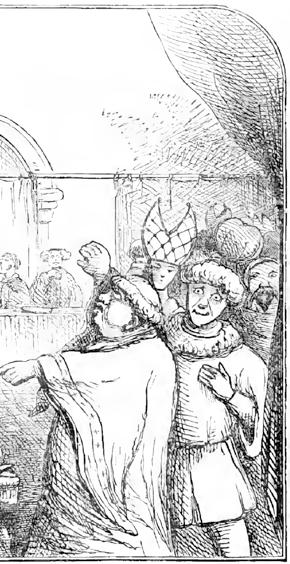
The belfry of the Cathedral houses seven bells. They each have a name, history and a distinct note.
In Lausanne, these courts came to an end after they were banned by the Catholic Church following Bern’s annexation of the canton of Vaud in 1536. But we find evidence – in Fribourg, for example – of excommunications pronounced in the fields until the end of the 17th century.
Pigs thrown into prison Parasites were not the only animals to stand trial in Europe. Pigs, dogs, horses, cockerels and cows could all appear before a court – secular this time – to answer charges of causing damage or injury. The most famous example is the case of a sow from Falaise in France, which was accused of killing a child. Imprisoned as a human before being tried and sentenced, it was publicly hanged. “We found a case of a pig being tried in Valais in the 15th century. In the diocese of Lausanne, we don’t know of any similar cases being mentioned in the legal archives, but the same thing could have happened here.”
The Notre-Dame de Lausanne Cathedral has stood as a symbol of the city, towering over its landscape for more than seven centuries. Construction of the building began around 1160 and was completed in the mid-13th century. By climbing its 242 steps, you can visit the bell tower any day of the week. Inside it are seven bells worth their weight in... metal.
The instruments occupy two floors of the tower, with the two largest of the seven on the lower floor. With a diameter of 208 cm, the biggest bell is Marie-Madeleine, weighing in at a whopping 5.6 tonnes. She was cast in 1583 by a man named Franz Sermund from Bern.
Ringing out in A flat, MarieMadeleine is a bourdon. In campanology (the study of bells), a bourdon is the heaviest in a set of bells. The bell that can be heard sounding out through the city today took its present form in 1898, after tuning work and the addition of two new bells to celebrate the 100 th anniversary of the Vaud revolution.
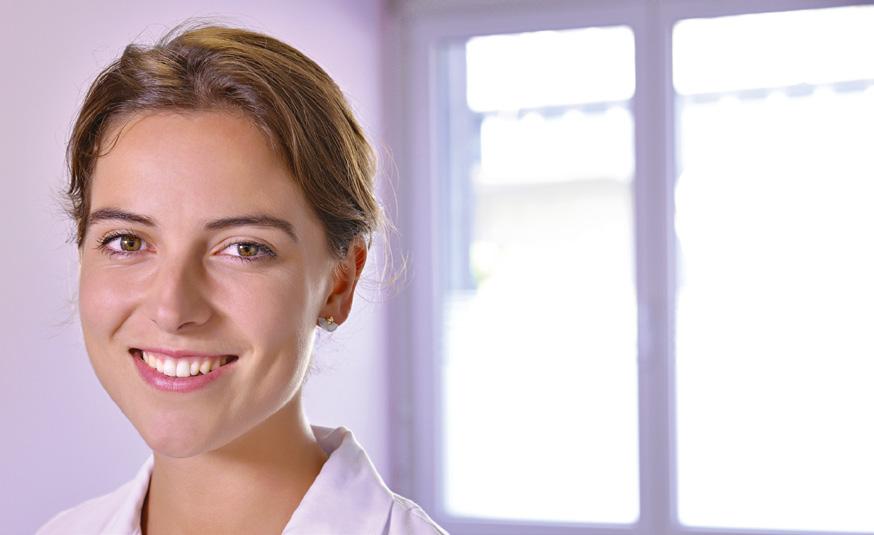
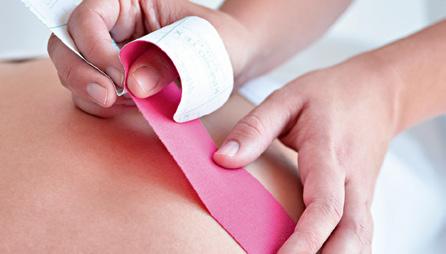

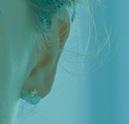
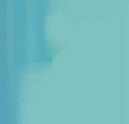
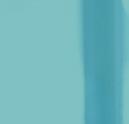




Théâtre de Beaulieu, Switzerland’s largest theatre, has undergone a full makeover. Now it is set to host more than 100 performances a year.
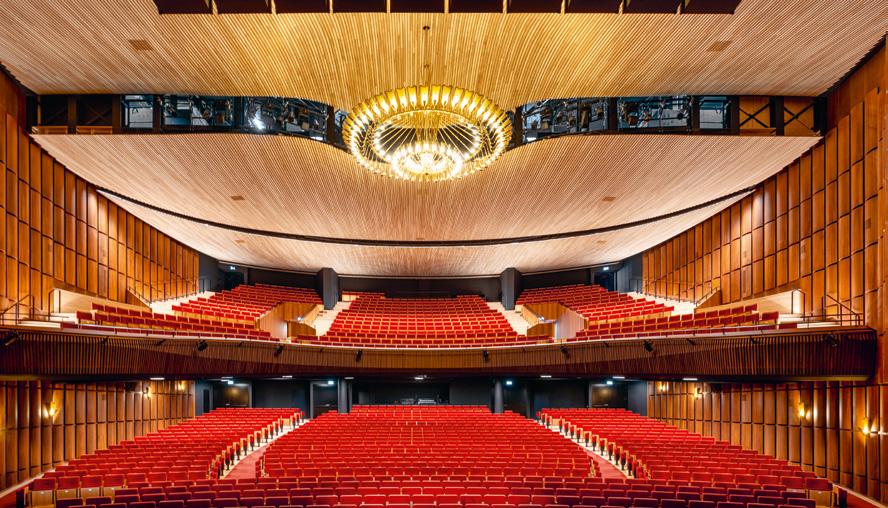
In the heights of Lausanne, Théâtre de Beaulieu has regained all its splendour. Just like its impressive chandelier, dazzling with 136 bulbs, which majestically hangs in the main theatre. An amusing aside: When the technicians dismantled the light fixture for renovation, they found a note hidden in the suspension, along with some coins. The reason? During every technical inspection since the 1970s, the electrician would write down the details of his work on a sheet of paper and leave a little money for good luck.
A combination of “excitement, joy and anxiousness”, Michel Loris-Melikoff, general manager of Beaulieu SA, the company that runs the theatre, confessed to feeling a few days before the venue reopened in early September. After all, the theatre has been undergoing extensive upgrades over the past three years, designed by Fehlmann Architects.
“The renovation was carried out with a few discreet modern touches,” says Michel Loris-Melikoff. The reception area has been completely refurbished, and spectators can now find refreshments at bars located on all three levels. An upper level offers a panoramic
1,400 m2 terrace with a unique view of the city, the lake and the mountains.” Another change is the new Quintino restaurant, open seven days a week, with seating for more than 200 guests.
The Théâtre de Beaulieu now has 1,623 seats, including 100 in balconies. “We are still the largest theatre in Switzerland... and the most beautiful,” says Michel Loris-Melikoff with a smile. “We are looking forward to sharing new experiences with the public in this beautiful setting. I love the ballet, so I’m really looking forward to the return of the Béjart Ballet Lausanne with Wien, Wien, nur du allein in mid-December. And I’m also excited for the legendary musical West Side Story, on from 21 February to 5 March 2023. It should be an impressive show thanks to the new sound system.” A major dance event will take place from 29 January to 5 February 2023, with the 50th edition of the prestigious Prix de Lausanne dance competition, returning to Beaulieu after three years elsewhere due to works and the pandemic. A special programme has been put together to celebrate this anniversary, which will culminate in a sumptuous gala.
Théâtre de Beaulieu Prix de Lausanne
Lausanne’s Beaulieu Theatre has reopened its doors after three years of refurbishments.With Like an Island, shot entirely in Lausanne, Tizian Büchi has become the third Swiss native to win the Grand Jury Prize at the Visions du Réel documentary film festival.
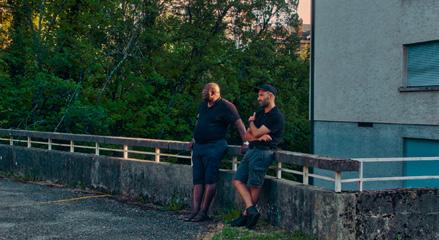
Hidden by the Avenue du Léman and running along the Vuachère river, the district tucked away in the Faverges valley remains relatively unknown, even to people from Lausanne. Yet the wooded haven outside the bustle of the city offers a welcome respite. And it’s where director Tizian Büchi, a Neuchâtel native who has lived in Lausanne for 15 years, set the story for his first feature film, the docu-drama Like an Island (L’Îlot). “I like creating a dialogue between reality and magic, blurring the barrier that separates fiction from documentary,” the filmmaker says. And barriers are precisely what he breaks down, one by one, in this film, challenging their very basis. “It shows how the residents of this urban island, mostly retired people and immigrant families, have all managed to fit in and live together.”
Like an Island traces the footsteps of Daniel Nkubu, a jovial individual well known to locals for having long been a ticket inspector in Lausanne, and Ammar Abdulkareem Khalaf, Tizian’s former flatmate. They play two security guards tasked with ensuring no-one goes near the Vuachère. But no-one knows why. Through this fictional prism, the residents they meet on their rounds develop theories, painting a portrait of Faverges that straddles reality and imagination.
The film made its world premiere at the 53rd Visions du Réel festival in Nyon in 2022, where it won the Grand Jury Prize for Best International Feature Film. Events will be organised to mark its release in theatres in March 2023, including meetings, scientific walks and guided tours. “It’s a ‘hole’ where you don’t have the amazing view of the lake that you have elsewhere in town. But it has other advantages – it’s a friendly, calming and enchanting space between the river and the forest. You can also see salamanders, badgers and foxes there. In fact, the perfect way to explore the area is the On the trail of the fox walk (see below). This pocket of nature in the middle of the city is very precious,” says Tizian Büchi, who moved to the neighbourhood after making the film.
Information: alvafilm.ch
On the trail of the fox walk →
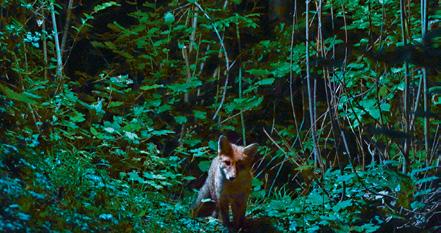
Stills from the film Like an Island by Tizian Büchi, filmed in the district of Les Faverges.
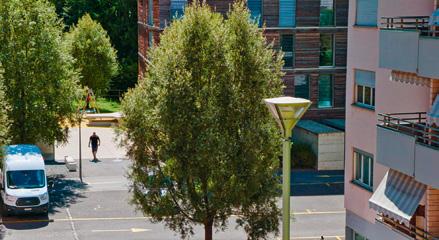
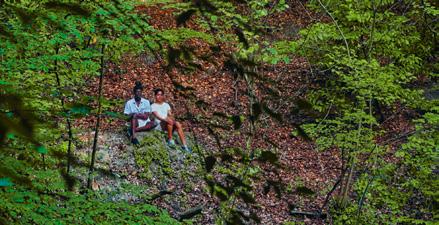
In each edition, The Lausanner introduces you to a different stall at the Lausanne market. This time, it’s cheesemaker Duttweiler Fromages who’s in the spotlight.
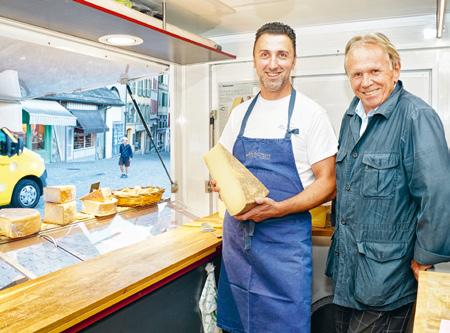 Interview by Trinidad Barleycorn
Interview by Trinidad Barleycorn
Everyone is talking about the cheesemaker’s Gruyère caramel. Its unique taste is a delight for anyone’s palate, even reaching the luxury hotels of French-speaking Switzerland. For more than four decades, Jacques Duttweiler from Lausanne has been delighting his customers with his aged artisanal cheeses. Now retired, he shares his manufacturing secrets with Xheladin “Gelo” Mustafa, who has taken over as head of the company. We caught up with them for a joint interview.
Tell us about your background.
Jacques: After completing hospitality school in Geneva, I wanted to be a cheesemaker like my grandfather. I founded my own company in 1978. I started out as a shepherd and made sheep’s milk cheese. Then I became an affineur, or cheese ager.
Gelo: I started working with Jacques in 2012. I was a trained chef, and he taught me how to age cheese. In 2019, I took over the business. But Jacques is still the boss! (Laughs.) And good thing, because I always ask his opinion.
Jacques: He doesn’t need to. Gelo can age cheese just as well as I can!
J : Natural Swiss alpine pasture cheeses: our Gruyère caramel, Vacherin from Fribourg, Étivaz, and others. Our speciality is raw milk cheese, because pasteurising kills the taste. We also make a mixture for fondue.
G : We’re a very small company. It’s just Jacques and me. We work with three cheesemakers in the region who each produce between four and five wheels of cheese per day. They keep them for six to seven months. Then we take care of the ageing process.
How was your Gruyère caramel cheese created?
J : I came across some of my grandfather’s notes. I followed his technique and developed it. One day, in 1992, Jean-Pierre Coffe (French food critic and television personality, who died in 2016 – ed.) came into the shop that my wife and I had at the time on Rue de l’Ale. He tasted it and said, “With cheese like this, we don’t need dessert, we’ve had it already! It tastes like caramel.” I thought about it again the day that Swiss chef Philippe Rochat told me that it had a caramel finish. So I named it Gruyère caramel. Since 2011, it has been a registered trademark.
J : The ageing method that I created. It is aged for 32 months in natural molasse rock cellars dug into the mountain, with a humidity level of between 80 and 100%. The wheels of cheese need to be turned over, rubbed and moved from one cellar to another. We sell it for 39 Swiss francs per kilo at the market.
J : Through Frédy Girardet from Hôtel de Ville in Crissier. He had ordered sheep’s milk cheese for a dessert he wanted to make. Forty years and three chefs later, we’re still working with the restaurant. Chefs want us to guarantee consistent quality. We also supply other big-name establishments, such as Anne-Sophie Pic’s restaurant at Beau-Rivage Palace. G : Many customers come to us after tasting our cheeses in restaurants.
J : Yes. When we still had our shop, a guy tapped on the window after closing time and asked me to open up for the British princess! She had tasted our cheeses at Lausanne Palace and wanted to take some home. She bought a generous selection of Swiss cheeses and some Gruyère caramel, of course.
At the market: Place de la Riponne, Lausanne Wednesdays and Saturdays, 7 a.m. to 2 p.m.
Gelo (left) and Jacques with a piece of their famous – and exceptional – Gruyère caramel.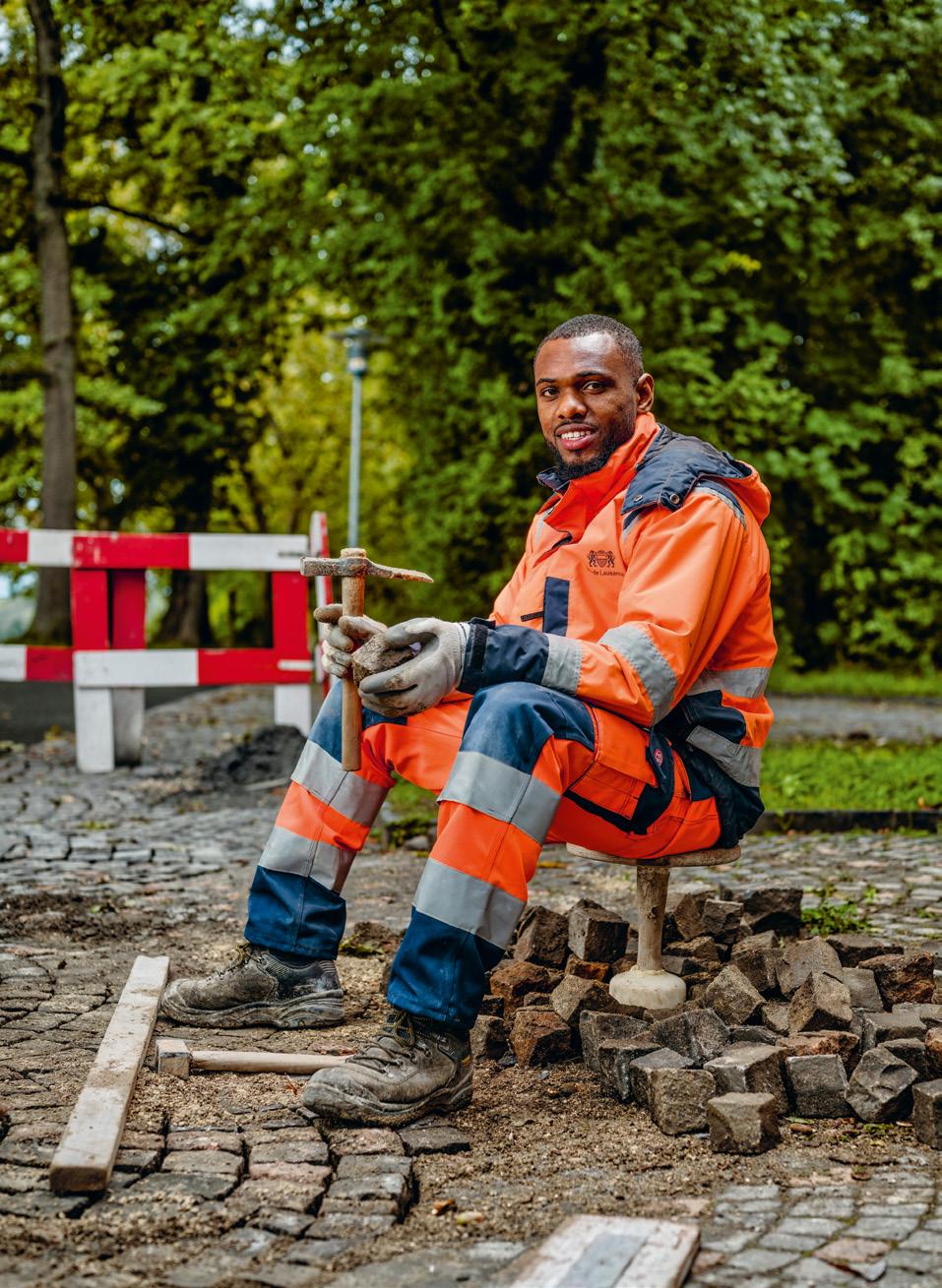
Lausanne is the only city in French-speaking Switzerland that offers professional training in paving. It is also one of the few places that has an expert team available all year round.
Interview by Trinidad BarleycornLausanne and its cobblestones. It’s a true love story. That bond is so strong that a unique chocolate has even been invented in their honour: the pavé au chocolat from Confiserie Tony. In the streets, hundreds of thousands of paving stones keep that flame alive, with the oldest proudly displayed around the Cathedral.
In recent years, upgrades to city districts have put even greater emphasis on the age-old art of street paving. More aesthetically pleasing than tarmac, which was long favoured for the comfort of vehicle passengers and to save time, stone paving is also more durable – with proper maintenance, it can last more than a century. It is not affected by the heat, and allows water to seep directly into the ground without costly conditioning.
Iderlindo Semedo Cabral, 27, has been a paving worker since 2016 with the City’s Public Works Unit, after completing his apprenticeship there. He tells us all about this profession with a promising future.
How many of you work in this trade in Lausanne?
Iderlindo Semedo Cabral: There are three of us. The City of Lausanne wants to recruit more, but this skill is in great demand in Switzerland, so it’s hard to find people. Pavers are rare, and female pavers even more so.
How do you become a paver?
In French-speaking Switzerland, the three-year apprenticeship takes place in Lausanne. The professional courses, which focus a lot on geometry, take place in Colombier (NE), and the practical courses in Alpnach (OW) in German-speaking Switzerland.
What made you want to do this job?
I grew up in Cape Verde. We did construction work around the house, and my older brother wouldn’t let me lay paving stones. When I arrived in Switzerland in 2012, I met a friend who was a paving contractor. I really liked his job. Today, I’m the one who lays the paving stones! (Laughs.)
What do you like most about your job?
I’m proud to work in an age-old trade and take part in maintaining the beauty of the city. I like being creative and suggesting new things.
Which paving job are you most proud of?
The one in the toilets at the Olympic Museum. We even signed it! We suggested including the Olympic rings in Carrara marble to the contracting authority, and our idea was approved.
What are the qualities of a good paver?
You need to be in good physical condition. When you pave a sloping street, it’s physically challenging. You have to be patient and meticulous. We do between 10 m2 and 15 m2 per day working in pairs with a labourer who supplies us with materials. And 7 m2 to 8 m2 if you’re working alone. When you do repairs, you have to be able to adapt to the artistry of the person who created it and understand their thought process. You have to adjust the size of the stones to the layout design, and everyone has their own style.
What materials are used in Lausanne?
With a few exceptions, paving stones are calibrated by size and weigh between 500 g and 10 kg. They are made of Swiss sandstone and come from Alpnach. Sandstone offers good resistance and isn’t slippery. We also work with recycled materials. When tearing down an area, we recover the paving stones. Damaged ones are crushed and used as filler.
The town planner determines the style, but we offer advice if the choice doesn’t seem feasible. The paving can be arched, which is the most durable, linear, circular or irregular. After receiving the plans, we calculate the alignments based on the size of the paving stones chosen. Then we spread yellow sand before laying the stones on top. We can also use mortar or concrete, but that’s rare. The result will be harder, but laying on sand and filling the joints with sand is the traditional technique. This makes the paving permeable. Next, we determine runs, i.e. we divide the ground into strips. Then, we sit on our stool and start laying the stones.
A paving hammer to calibrate the stones and a laying hammer to dig the sand and level the stones.
What do you do when there aren’t any paving projects?
We maintain paving stones, but also tarmac, piping, etc. I give demonstrations during the Balade des pavés (Paving stone walk, organised three times a year – ed.), and this year I’ve taken courses to train future apprentices.
From concerts and musicals to comedy and evenings of festivities, artists have once again set the city buzzing. Here are a few of the celebrities you might have spotted in Lausanne in recent months.
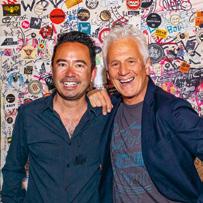
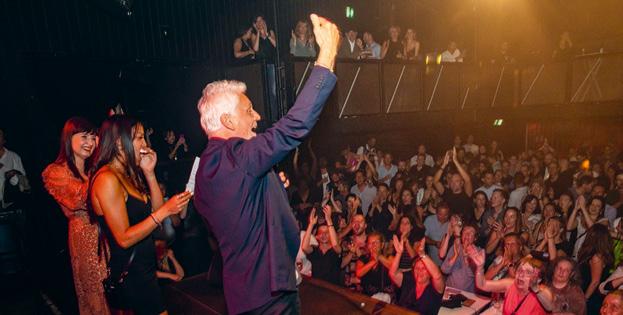
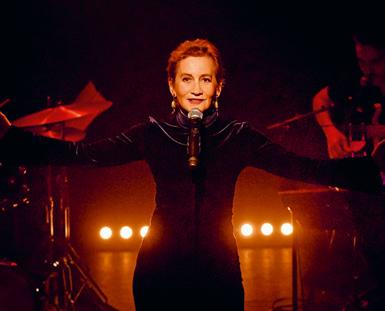
On 9 June, Marc-Olivier “Marco” Reymond, owner of the Bamee Bar on Avenue de la Gare, achieved a real master-stroke – convincing Gérard Lenorman to come and sing his famous La ballade des gens heureux (“The Ballad of Happy People”). This 1975 hit has been the official anthem of Marco Reymond’s restaurant ever since he had the idea of playing it on a loop during the Swiss victory at the Davis Cup in 2014. Since then, it has been played at all of the evenings he organises.
This particular event, attended by 400 members of the “Bamee Family”, took place at the D! Club. The evening featured a Thai buffet, a live performance by two singers, three DJs, and Gérard Lenorman himself, who began with Voici les clés, before launching into La ballade three times, to the wild adulation of the crowd. “He thought the evening was crazy and the people even crazier,” says Marco Reymond. “He wasn’t expecting that, and he said that he’d never seen an atmosphere like it.”
In Lausanne to perform her musical Chiche! at the CPO in Ouchy on 24 September, the French singer – best known for C’est la ouate – took the opportunity to spend some time with her friend Paloma Picasso, Pablo’s daughter, who lives in the city. She revealed on Instagram that they attended the inaugural Plateforme 10 exhibition, where she photographed Paloma in front of the portrait of her painted by her father. A true art lover, Caroline Loeb also visited the Collection de l’Art Brut: “It’s impossible to visit Lausanne without going!” she said.
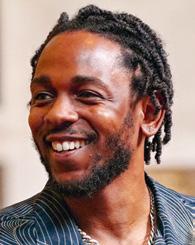
For the single date in French-speaking Switzerland of The Big Steppers Tour 2022, the American star – who has won 14 Grammy Awards, a Pulitzer and much praise for his recent half-time performance at the 2022 Super Bowl – came to the Vaudoise Aréna with his team of 150 people on 26 October. The critically acclaimed show was attended by an audience of 6,000.
From 25 to 28 October, the French comedy magician gave four performances of Grandis un peu! at the Salle Métropole. This is a venue that he particularly likes and has performed at in the past. “I’m happy to be in Lausanne –I love the city and I love the people here. In fact, I think I deserve to be Swiss!” he joked to LFM radio.
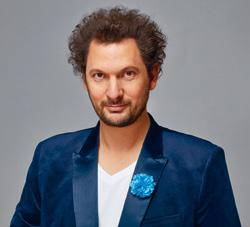
The holder of EPFL’s mathematics chair, Maryna Viazovska, made headlines around the world on 5 July when she was awarded a Fields Medal. This distinction is considered equivalent to a Nobel prize in mathematics. The Ukrainian mathematician is the second woman to receive this prestigious prize, which has been awarded every four years since 1936. She received the medal for her work on sphere packing in dimensions eight and 24.

Before her concert at the Docks on 31 May, the Norwegian star told journal 20 minutes about the bond that ties her to the region: her parents lived in Lausanne with her sister and her brother before she was born. “I missed my chance!” added the 26-year-old singer. On Instagram, she documented her visit with three photos taken by the lake, captioned with the words: “thank u, Lausanne! that was fun”
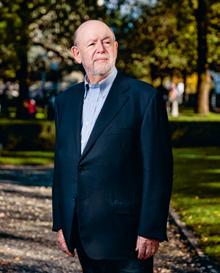
Famous for editing Star Wars, Footloose, and Mission: Impossible, and for his numerous collaborations with Brian De Palma, Paul Hirsch launched his autobiography, A Long Time Ago in a Cutting Room Far, Far Away..., at the Swiss National Film Archive on 2 October, alongside a retrospective on his career. The following day, the New Yorker gave a masterclass at the Lausanne University of Art and Design (ECAL).
How many centimetres does Lake Geneva drop by in winter? 50 cm.
Every winter since 1884, the lake is artificially lowered until April to prepare for the arrival of huge volumes of water from melting snow and high rivers. In leap years, it is reduced by a further 20 cm between March and April so the banks can be cleaned and maintained. Lake Geneva reaches its maximum level (372 m) in June.
Lausanne’s cultural scene has undergone a major renewal this year, with new directors appointed at several city institutions.
Last summer, the Photo Élysée museum –freshly installed in its new setting, Plateforme 10 – was delighted to welcome the curator and art & photography historian Nathalie Herschdorfer, formerly the director of the Le Locle Museum of Fine Arts. “With its new location shared with the mudac (Museum of Contemporary Design and Applied Arts) and its proximity to the MCBA (Cantonal Museum of Fine Arts), Photo Élysée is a 21st century museum that’s open to all,” said the new director.
Change is in the air at the mudac too: following the retirement of Chantal Prod’Hom, the Italian-born curator Beatrice Leanza has been appointed to the role. The internationally renowned critic and museum director will begin work in her new post on 1 January 2023. “Joining mudac in its next-phase of development as part of the new network of Plateforme 10 is a thrilling challenge and a truly unique opportunity to shape a future driven institution that can
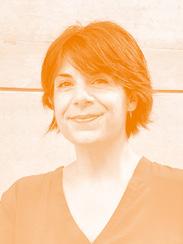
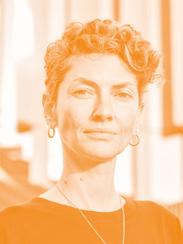

champion intellectual generosity and creative optimism in times when we need them the most”, she said in the statement announcing her appointment.
This year’s BDFIL comic book festival is being headed up by a duo: Gaëlle Kovaliv and Léonore Porchet, renowned comic book experts, are joint directors of Lausanne’s festival celebrating the “9 th Art” in all its forms in a way that combines scholarship and a popular approach.
Openness is also the watchword of Karine Meylan, the new director of the Vidy Roman Museum: “One of my priorities is to attract a more diverse range of visitors and create a space accessible to all generations, regardless of background, level of education or disability,” she explained. “Rather than think in terms of age brackets, I want to address visitors’ needs and desires, in particular by creating new formats or actions targeted at certain groups.”
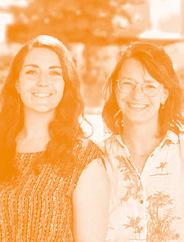 Beatrice Leanza
Léonore Porchet (left) and Gaëlle Kovaliv
Karine Meylan
Beatrice Leanza
Léonore Porchet (left) and Gaëlle Kovaliv
Karine Meylan

Musée de la machine à écrire (MMàE –Lausanne Typewriter Museum) is one of the world’s only institutions devoted to the history and development of these machines, as well as other office equipment such as calculators and hole punches. The MMàE recently moved to new premises, where visitors can now discover a collection of over 500 items from all over the world. And the public can even use five of the museum’s typewriters to share a poem or pour out their hearts...
Musée de la machine à écrire Rue des Terreaux 18b, Lausanne Open from Wed. to Sat. from 11 a.m. to 5 p.m.
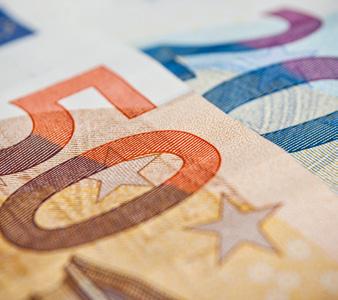
Almost 90% of banknotes worldwide are produced using technology developed in Vaud. SICPA, a company founded in Lausanne in 1927, specialises in security inks and solutions. And Koenig & Bauer Banknote Solutions, which celebrated its 70th anniversary in 2022, is the world leader in banknote printing. It provides central banks with the special presses used for printing money.
Which cheese from the Joux Valley is only produced during the winter months? What is the name of Europe’s largest freshwater aquarium, located in Lausanne? These are just a couple of the 600 questions from the new board game called “T’es Vaudois si” from Unique Gaming. Play with friends or family to test your knowledge of the canton’s history, its culture, and its famous figures while also trying to win the three titles up for grabs: fastest Vaudois, smartest Vaudois or Super-Vaudois. tuesde.ch/vaud
Answers: Le vacherin Mont-d’Or – Aquatis
The Beau-Rivage Palace has been named Hotel of the Year 2023 by Gault&Millau. The 5-star hotel, which was founded 161 years ago, first won the award in 2007. The guide highlights its ideal location on the shore of Lake Geneva, the outstanding quality of its five restaurants, its beautiful four-hectare park and the successful renovation of its historic east wing in 2020.
In April, Lausanne was named the Swiss winner of WWF’s One Planet City Challenge 2022. The jury of international experts commended the city’s Climate Plan and its ambitions in terms of energy efficiency, CO2 reduction, mobility and tree-planting.
The largest indoor swimming pool in Switzerland opened its doors to the public on 1 September at the Vaudoise Aréna in Malley. The aquatic centre features an Olympic swimming pool with room for 700 spectators during competitions, a diving pool, a relaxation pool, a teaching pool and a large children’s pool.
Until 29 January, the Palais de Rumine presents Qanga: Greenland Over Time Qanga, which means “bygone days” in Greenlandic, marks the starting point of this exhibition retracing the history of the world’s largest island, from its first inhabitants to the modern day, based on the graphic novels of Greenland artist Konrad Nuka Godtfredsen, coupled with historical objects, archaeological artefacts and works of art from Greenland.
Elisabeth Gerritzen is entering her seventh season on the Freeride World Tour (FWT) this winter. This Lausannoise skier is a two-time winner of the Xtreme Verbier competition and the 2021 Freeride World Champion. A woman of conviction, she is studying for a master’s degree in law at the University of Geneva. Read our interview below.
What are your ambitions for the 2022-2023 season?
Elisabeth Gerritzen : To do my best on the circuit while freeing myself from the pressure of being the favourite, which considerably hampered my performance last winter. My dream is still to win the overall ranking and to lead the headline event at Verbier, but I refuse to become obsessed with it. At 27, I’m already almost a veteran. That feels weird...
I also released my film Fragments choisis in October.
It was presented at the High Five Festival in Annecy and can be viewed online. I put my heart and soul into that project, combining sports and more personal images.
In 2021, shortly after your victory at Xtreme, you decided to come out on Instagram. Why did you do that?
I was suddenly in the spotlight and wanted to take advantage of that to do something meaningful. It was a bit of a spur of the moment thing, but
I felt strong enough to handle any unpleasant backlash. But it never came. I did it for the young girl I used to be, who was sort of in hiding, and especially for all the girls who may still be like her today...
As a teenager, I didn’t have any lesbian role models to inspire me. It was also an opportunity to align my private life with my public persona.
How did a city girl such as yourself develop this passion for skiing and the mountains?
My parents love skiing and the mountains. We would go to Verbier every weekend.
I quickly got caught up in the world of competitive downhill skiing, but I hardly excelled at it. So, a few rebellious friends from the ski club and I started building little jumps along the ski runs and then ventured into the powder. The year I turned 16, the first FWT qualifiers came through Verbier, and we signed up. The rest came naturally through passion and hours of practice. At age 20, I was on the worldwide circuit.
And the experiences you had while on that circuit awakened a feminist consciousness in you...
Yes. Freeride is a very masculine world and one that is still tinged with patriarchy. But ever since I was a child, I’ve always been very sensitive to injustice.
Interview by Laurent GrabetIn 2020, thanks in particular to the fighting spirit of snowboarder Anne-Flore Marxer (see her interview in Lausanner issue No. 04 – ed.), women’s prize money was aligned with that of men. I’ve been on the FWT gender equality commission since last winter. So things are moving in the right direction, but work still needs to be done. For example, at Xtreme, why don’t women start from the summit of Bec des Rosses like the men?
What are your links to Lausanne?
My parents moved to Lausanne, in the Chailly district, when I was 3, and I lived there until I was 20. Lausanne is still the city where my heart is. Memories of my childhood and youth spring up on every street corner. I come back regularly. Lausanne is like a village and a big city all at once. There’s a lot going on in every area. It enjoys a prime location on Lake Geneva and I have definitely taken advantage of that.
My love of cycling was also born while biking along the lakeside and in the steep streets of the city. Two years ago I cycled to Marseille, and last summer I travelled by bike to visit my older brother in Amsterdam. I love that freedom!
LA COURONNE D’OR
Rue des Deux-Marchés 13, Lausanne couronnedor.ch
CAFÉ-RESTAURANT
RESTAURANT
VIEWPOINT
Place du Vallon 5, Lausanne @LeDalatLausanne
“I went to this typical Lausanne cafébar-restaurant a lot when I was younger. It is central, but far from the hustle and bustle, welcoming, inexpensive and ideal for chatting with friends.”
“I’ve been a regular at this Asian restaurant for a long time. It has an incredible charm thanks to its location in the former funicular station that linked La Cité to Sauvabelin. I recommend the excellent vegetarian bò bún.”
PLAGE DE LA TOUR
HALDIMAND
Avenue de la Tour Haldimand, Lausanne
“This is a wonderful place for admiring the lake in peace and quiet or for a swim. There aren’t usually a lot of people. And you can get there by taking a lovely little footpath.”
Keen to live like a local and get to know their favourite spots? Then you need the Lausanners – visit thelausanner.ch for the inside scoop.
The Lausanne locals that currently make up the Lausanners community come from all sorts of different backgrounds, and have plenty of top tips year-round to help you fully enjoy the city. In this issue, we’d like to introduce you to Valérie Rüfenacht, a PhD student in marketing and management, and Victor Michaud, an engineer with a passion for photography.
Interview by Alice CasparyValérie, can you tell us a bit about yourself?
I grew up in a small Vaud village called Châtillens. I am 26 years old. I was born in Lausanne, where I studied in HEC at UNIL. I’m currently doing a doctorate in marketing and management at the University of Neuchâtel. In my free time, I like to write poetic texts, just for me.
Where do you get your inspiration from?
I like to lounge about in cafés, because you’re surrounded by such a unique atmosphere. Sometimes I sit on the terrace of the Kiosque de Saint-François and just watch people passing by.
I also like to go to Bar Tabac, because it’s quiet, and you can find people of all ages. The owner doesn’t care about following trends. That gives the place a real soul. And it also happens to be beautiful with its old wooden flooring.
Do you have any other places to recommend?
I recommend the Ordinary Man café in the Petit-Chêne, which serves excellent coffee, but above all exhibits contemporary photographers. I also like to go to the Montriond. There too is a real neighbourhood feel, and I love the mix of generations. I feel at home there.
What do you like to do for fun in Lausanne? I’m very interested in art. I love to see exhibitions at Plateforme 10 and at the Hermitage Foundation. I also enjoy going to flea markets. On Sundays, I go to the ones by the lake or on Place de la Riponne.
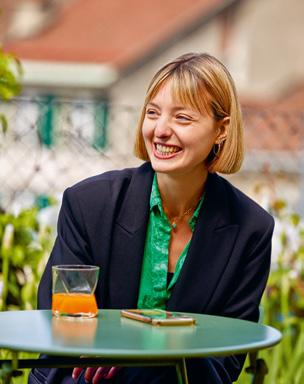
What about sports?
I sometimes take spin classes (indoor cycling –ed.) on Rue du Simplon. You can pay per class. And that’s practical, because I don’t go very often (laughs)!
What do you like specifically about Lausanne?
The city is not too big, not too small, and there are lots of cultural things going on. Lausanne also has a tremendous culinary offering, with many shops featuring vegan menus. It’s a green, pleasant city. A truly vibrant place!
Kiosque de Saint-François kiosque-stfrancois.ch
Bar Tabac bartabac.ch
Ordinary Man ordinaryman.coffee
Le Montriond lemontriond.ch
Plateforme 10 plateforme10.ch
Spin classes: BEAT fitness beatfitness.ch
Victor, can you tell us a bit about yourself?
I’m 25 and from Lyon, France. I moved to Lausanne seven years ago to study at the École polytechnique fédérale (EPFL). Now I work as an engineer. I live by the lake and often spend my free time outside, walking around. Outside of my work, I do video and photography.

Did you like Lausanne right away or did you have to learn to love it?
I immediately loved it. I came under its spell as I arrived on the cantonal road that runs along the lake. It’s quite easy to meet people when you’re a student, so I was quickly immersed in Lausanne life. Through photography, I also met people from Lausanne who showed me some places to go.
Does Lausanne offer you beautiful settings for your photos and videos?
Yes, I like the region a lot for that. It has landscapes, but also culture and architecture, which are fantastic. It’s inspiring to take pictures of streets and passers-by. For example, I love the administrative buildings with their orangecoloured windows on Place Chauderon.
The light is reflected there at sunset. I also enjoy walking along the lake towards Saint-Sulpice and Préverenges. There are paths between the trees, lovely coves, and more. I also like Parc de Mon-Repos, with its exotic birds.
Why did you decide to join the Lausanners? The Tourism Office often shared my photos of the city. That made me want to participate more actively. You can see my work on my Instagram account @victormichaud_photo.
What’s your idea of a perfect winter weekend in Lausanne?
On a Saturday, I’d have coffee at Café de Grancy in Sous-Gare. In the evening, I’d go for a drink at Le Perchoir, on the eighth floor of the Vortex, one of the coolest bars in Lausanne, and then go to Le Bourg. On Sunday, brunch at the Blackbird Downtown Diner. Then I’d head to Vidy to take a walk and admire the lake. At the end of the day, I’d go to the Bô Noël market (the Christmas market for local artists which takes place from 17 November to 31 December at different locations throughout the city – ed.).
Do you still see yourself in Lausanne in 10 years?
Yes, definitely! It’s a big village, where you can live close to nature, but also close to urban activities. The quality of life here is incredible. I also really like the mindset of people in Lausanne, and more generally in French-speaking Switzerland. The people are open-minded and focused on nature.
Blackbird Downtown Diner downtownlausanne.ch
Bô Noël from 17 November to 31 December 2022 bo-noel.ch
From his workshops on Rue du Nord, Lausanne designer Antoine Cahen reinvented how we make coffee. Beyond the success of Nespresso machines, his work is driven above all by the search for simplicity and meaningfulness in objects. We caught up with him to find out more...
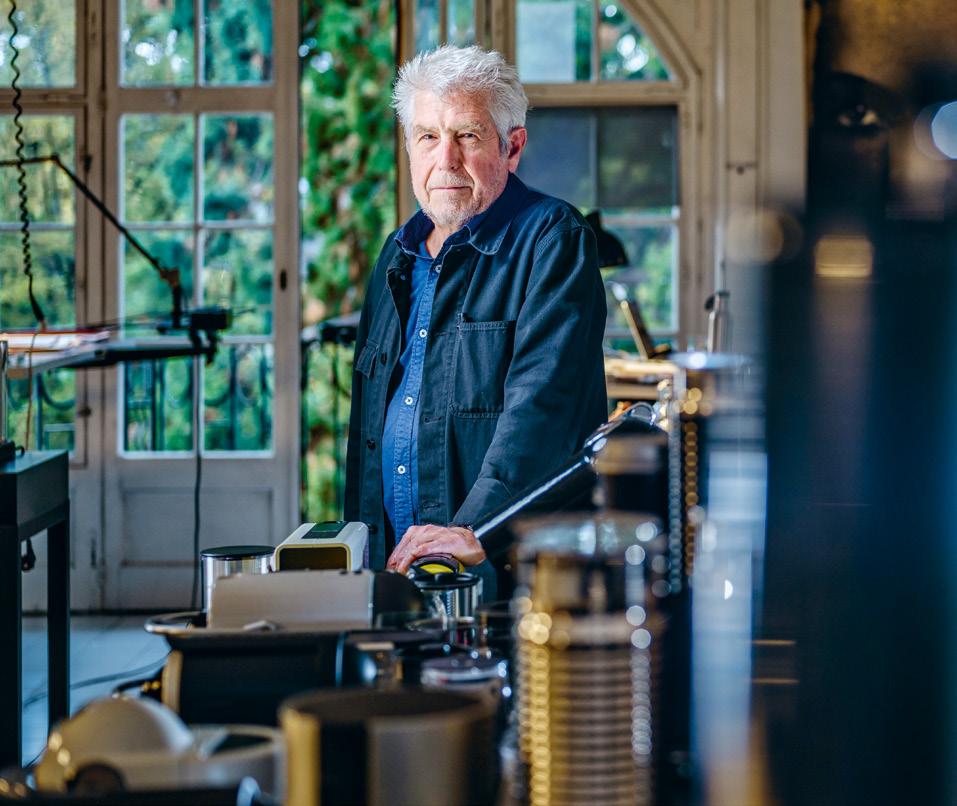 Interview by Pierre Grosjean
Interview by Pierre Grosjean
Last year, during a project, Antoine Cahen began an exercise that was unusual for him. He began to write down, on an A4 sheet of paper, the cardinal values that guide his work. He created a total of 14 concepts that sum up the approach of Ateliers du Nord (AdN), the design office he contributed to found in Lausanne in the early 1980s. The list, reproduced on page 36,
gives an idea of the questions he asks himself: what are the qualities of the objects people like using? What makes an object successful?
Having inherited the values of the Bauhaus, Antoine Cahen has always put simplicity at the core of his work, while also incorporating playful, sensory aspects. This is what he has built his reputation on within the industry. The capsule coffee machines he develops for Nespresso have been sold all over the world for 30 years. Tens of millions of units have been produced. Few people know Antoine Cahen’s name, but whether you are in a dentist’s office, in a metro carriage, or at home doing your ironing, you may well be using one of the many objects he has designed.
Antoine Cahen, born in 1950, studied design at Lausanne University of Art and Design, which was not yet called Ecal, and where he would later teach. He founded Ateliers du Nord (AdN) with Claude Frossard and Werner Jeker in 1983. His brother Philippe Cahen, an architect, joined them in 1996. Antoine Cahen has developed metro carriages (M1 in Lausanne), irons (Laurastar), computer mice (Logitech) and hydrants (vonRoll), not to mention Nespresso machines, medical and dental devices, and water treatment systems.
In an age where design is often reduced to its decorative dimension, The Lausanner wanted to meet this true industrial designer, a professional who constantly questions the meaning of objects and who finds practical solutions with large-scale applications. He spoke to us about sustainability and the role of the designer in industry.
Few people know that Nespresso machines are designed here, in this old apartment converted into a studio in the centre of Lausanne.
Antoine Cahen: We sometimes get told off for not communicating enough about what we do. It seems that today, design offices have to sell themselves, get their name out there. I don’t think that’s a good thing. Of course, it’s possible to promote someone else’s work. But I don’t think advertising my own work would feel right. Selling yourself is boasting.
How long have you been in this workshop? It’ll soon be 40 years. In the beginning, when we started working with the people at Nespresso, they had a team of eight. Now they have over 10,000. →
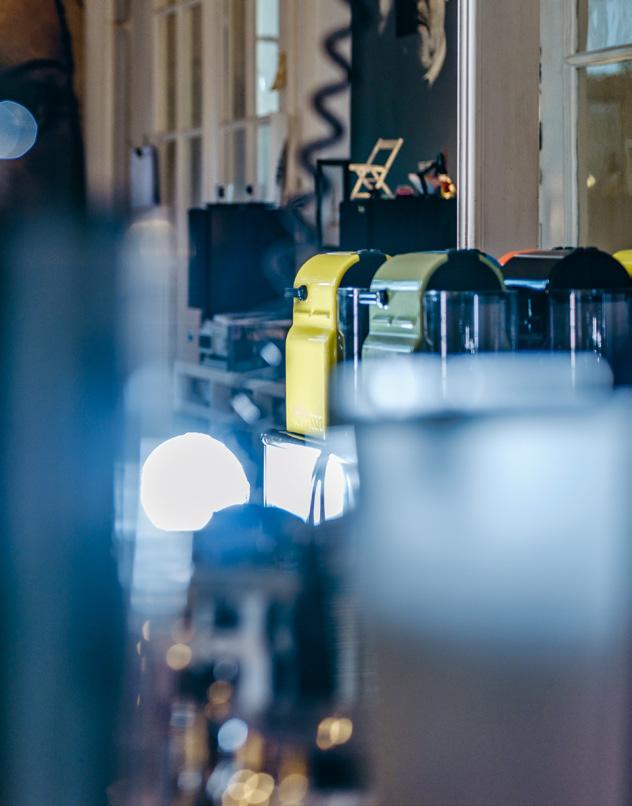
“I love ‘doing’, getting my hands dirty. When I do things, ideas come to me.”
Over the same period, at Ateliers du Nord, we’ve gone from three to four. Staying small is a choice: I don’t want to have to deal with human resources. I love “doing”, getting my hands dirty. When I do things, ideas come to me. You’re doomed to remain small if that’s the way you work. With a small team, we can build startup-style relationships with our clients. I still work with Nespresso on the same implicit foundations that we established at the beginning.
You’ve designed almost all of their machines for over 30 years. How have you managed to maintain the partnership?
We didn’t do anything to maintain it. Our sole concern was to propose solutions for this “new capsule”. In the end, those solutions created a brand image for the machines. The very widespread success has probably helped to maintain the partnership. But saying that, it hasn’t always gone smoothly. I remember one project in particular that no-one believed in except me. I found the strength to hold my ground, and it’s a miracle that I did.
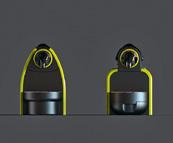
Antoine Cahen sums up the concepts that guide his work at Ateliers du Nord (AdN).
SIMPLICITY. Ease of use.
MINIMALISM. Clarity of language.
EXPRESSIVENESS. Transmission of ideas.
LEGITIMACY. Integrity of form.
EVOCATIVENESS. Allusions and references.
INSPIRATION. Sparking of desire.
PLAYFULNESS. The promise of delight.
INTUITION. Self-evident use.
DIFFERENCE. Independence from trends.
ENJOYMENT. Quality of sensations.
ERGONOMICS. Comfort of use.
MOVEMENT. An appeal to take part.
PERSISTENCE. Adherence to values.
PERSONALITY. Lack of compromise.
1. Hydrogen-powered ‘tourist’ catamaran project for Lac de Joux, 2012.

2. Essenza coffee machine, 2003, Nespresso.
3. Steel automatic watch, 2021, Montre AdN.
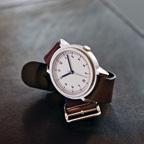
4. Steam generator for ironing and disinfection, 2019, Laurastar.
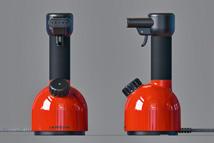
A new way of operating the machine, introducing the capsule from the top. Today, that’s how all machines work, but at the time, it seemed extremely unusual. The Nespresso people didn’t believe in it – when you’re investing millions in a new machine, it makes you cautious... And so battle commenced. After testing, this machine – the fruit of joint work between a designer and an engineer – was finally launched and became the standard. I don’t know if I would still have the same energy to defend my ideas today.
When I started out in this profession, people in Switzerland didn’t even know what the English word “design” meant. Now they know the word, but they confuse it with decorative aspects. They think that you take an object and simply add a little design to it to sell it. I’ve never worked like that. I’m an industrial designer. We try to resolve large-scale problems, to create great objects for everyone, with economical use of resources. That doesn’t mean we don’t work hard! Braun and Olivetti were enlightened companies that, despite their size, still had the desire to do everything exceptionally well. Their examples have guided me. I believe that designers are responsible for what happens with their designs and they need to be able to influence the company’s final decision.
That’s the relationship we have with Laurastar, which makes products for ironing, steaming, disinfecting, etc. We’ve been a stakeholder in their projects since the very beginning. It’s great but it can take a lot of energy.
Being economical with resources needs to become a long-term practice. It takes a huge amount of work to make things simple – it’s much harder to take away than it is to add... We still stand by all of these convictions that we held during our studies. Recently, a client asked me to come up with a new device that can be taken apart and repaired. We had to wait 50 years for this concept to become important once again. It’s going to be a lot of work. When you’re designing products that you know need to be repairable, you don’t do it in the same way. Recycling things is good. Keeping them for a long time is better.
Do you think Switzerland is a country of design? Of course, there is architecture and graphic design, areas where the country benefits from real traditions. But in its broad sense, design still isn’t well understood in Switzerland. The country may have a chance because of its small size and its Latin and Germanic influences. Swiss design could be defined as a confluence. But I don’t want to be associated with a nationality. I don’t like flags.
Do you ever launch your own projects rather than being asked to design something by a client? We don’t have many opportunities to do so, but we have occasionally produced watches. We’ve done it twice, 30 years apart. You can see them on adn-design.ch
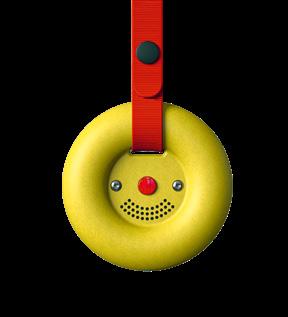
This little object was created following the observation that most music boxes for babies on the market sound bad, or simply off-key. They are just not suited to the extraordinarily keen hearing of newborns, who can distinguish between harmonies with the tiniest of nuances. In order to offer babies a high-quality first musical experience, Antoine Cahen agreed to music teacher Juan Buti’s proposal to help develop a new music box, called the BAM. The BAM plays six melodies, including Mozart and Chopin, chosen for the interval of their first notes, with the very best acoustic quality. For the box itself, Antoine Cahen chose a plant- and mineral-based polymer that makes it soft to the touch. The BAM was developed with support from the School of Engineering of Fribourg, and is made in Switzerland, with the sole current exception of its electronics.
More information: babybam.ch
Our aim was to create an object of beauty, a rejection of bling-bling. And last year, a guitar teacher came to see me with an educational music box project. He explained that if children hear notes that are in tune from a very young age, it encourages not only their general development but also their musical development. I liked this idea a lot: get it right early on and it’ll always be with you. And so, with an engineer friend, we decided to get involved. It’s now available on the market as a small run, in Switzerland and soon in France (see inset – ed.). →
“I believe that designers are responsible for what happens with their designs and they need to be able to influence the company’s final decision.”
It was a fun experience, but it was a one-off. I’m not going to launch an AdN collection and remake every object that I think is no good. I really admire artists who manage to get up and work every morning without anyone asking them to. They have drive.
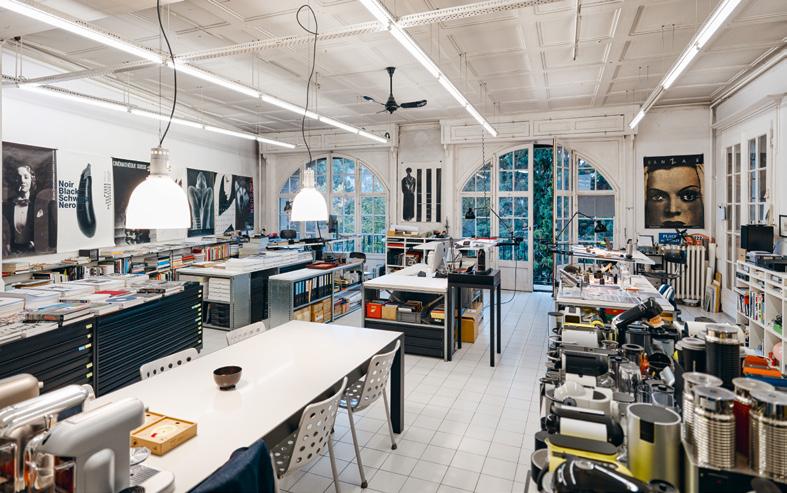
At 72, you seem to have drive too. If I’m still working, it’s because I’ve always combined my interests with my work. I don’t have hobbies. I don’t play golf, or go sailing, or ride horses. What I really love doing is my work. ■
LE MILAN
Boulevard de Grancy 54, Lausanne lemilan.com
RESTAURANT
BRASSERIE DU CHÂTEAU
Place du Tunnel 1, Lausanne brasserieduchateau.ch
“What I love about this Italian restaurant is that it welcomes everybody. Old people, young people, fashionistas, local people, without discrimination.”
“Lausanne’s first artisanal brasserie. They make their own beers and you can see how it’s done. The entire process is visible.”
BREWERY
COLLECTION DE L’ART BRUT Avenue des Bergières 11, Lausanne artbrut.ch
“When friends who don’t know Lausanne come to visit, I always take them to this museum, which I love. An extraordinary collection. A real rare gem.”
Ateliers du Nord has occupied the same space in Lausanne since 1983.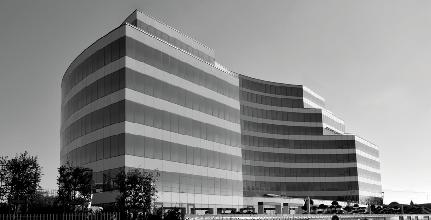
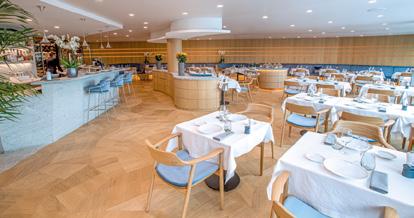
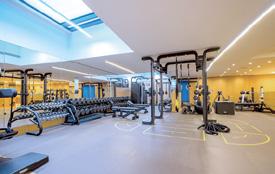
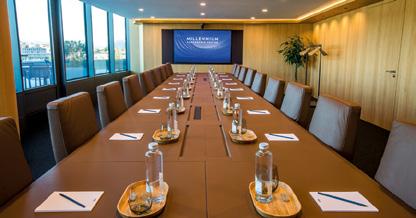
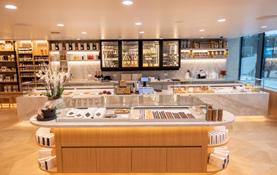
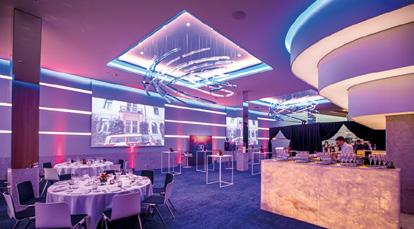
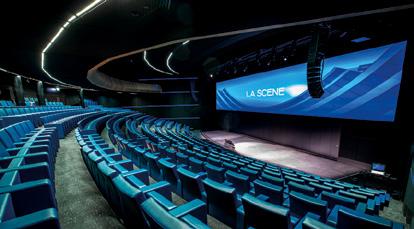
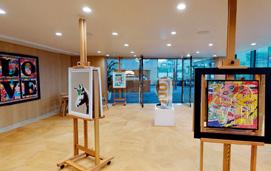
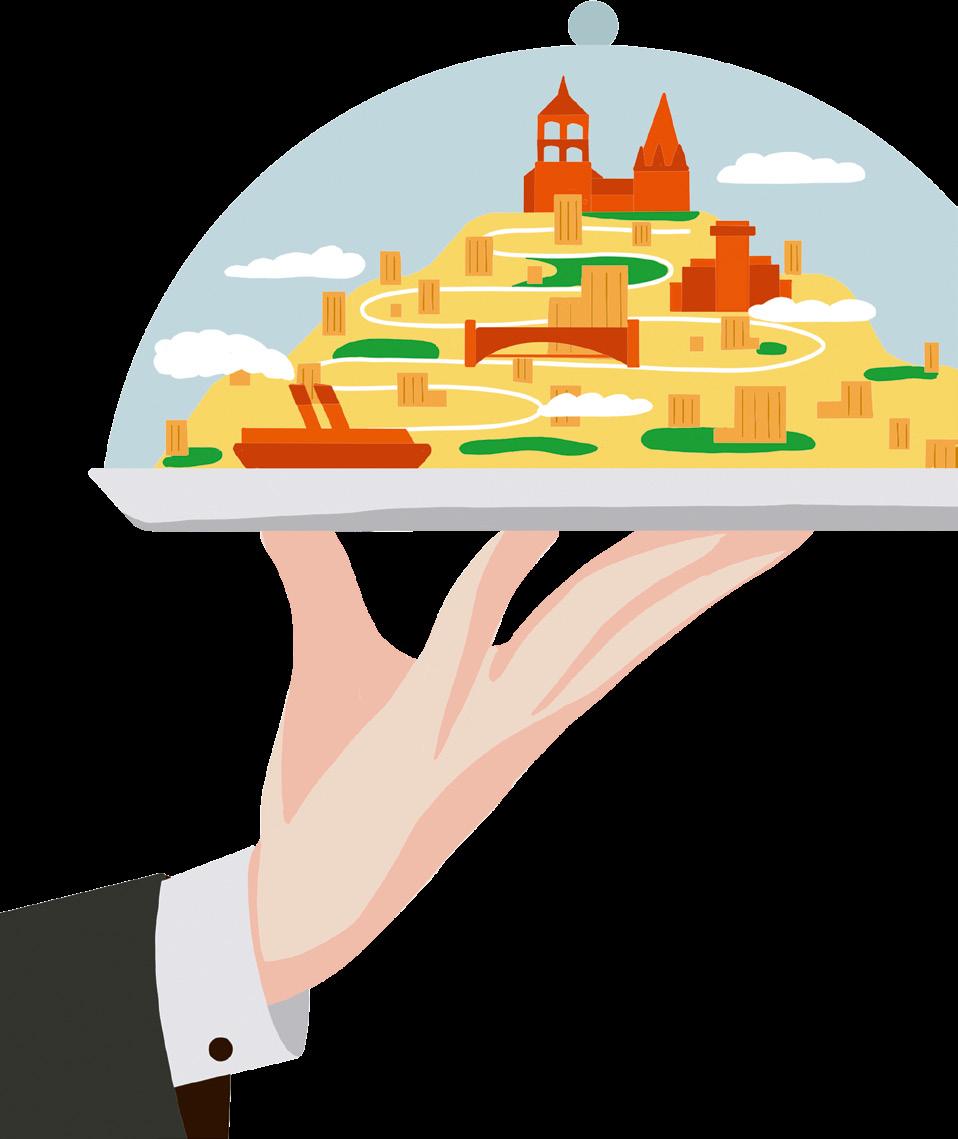
With a focus on culinary diversity, locavore menus and vegan flavours, Lausanne’s food scene masterfully combines innovative concepts that can be enjoyed at top restaurants, local bistros and even food trucks.
As an international hotbed for food and hospitality, the region has become a laboratory for inventing the future of the food industry.
Of all the facets of Lausanne’s international reputation, food plays a key role. This was highlighted again in October, when the Hospitality Business School (EHL) hosted the prestigious Swiss Michelin Guide ceremony for the first time to honour restaurant industry’s crème de la crème. This three year collaboration underscores the common quest for excellence shared by the famous guide and EHL, ranked as the best hospitality management school in the world. Many of the 300 establishments in Lausanne focus on new trends, featuring organic and locavore
food in a more sustainable approach thanks to limited transport. You can taste seasonal products from the region’s environmentally friendly subsistence crops. Vegetarians also have reason to cheer, as more and more places serve food exclusively without meat or any animal-based products.
Throughout the city, Lausanne’s variety of food options, ranging from traditional dishes to gourmet cuisine from the four corners of the world, can be enjoyed in proper restaurants or on the go, for example from food trucks.
Not to mention that the Vaud capital and its surroundings offer a rare concentration of Michelin-starred restaurants.
Food tech is another local speciality. Innovation reigns in Vers-chez-les-Blanc, where Nestlé employs a world-class team to explore and invent what our food will look like in the future. And the whole region benefits from this gustatory expertise.
Here we explore a city where the future of gourmet food is being invented.
“I’m delighted that in addition to the artworks at Plateforme 10, there is a culinary offer with a real intention at the restaurant Le Nabi, says Knut Schwander. The excellent dish prepared for the cover shoot made me want to come back as soon as possible to discover their cuisine.”
Knut Schwander, 59, is a leading food critic in French-speaking Switzerland. A specialised journalist for Gault&Millau and host of a culinary programme on the new radio station M Le Média, he arrived in Lausanne as a child and had his first taste experiences in the city. Read our interview below.
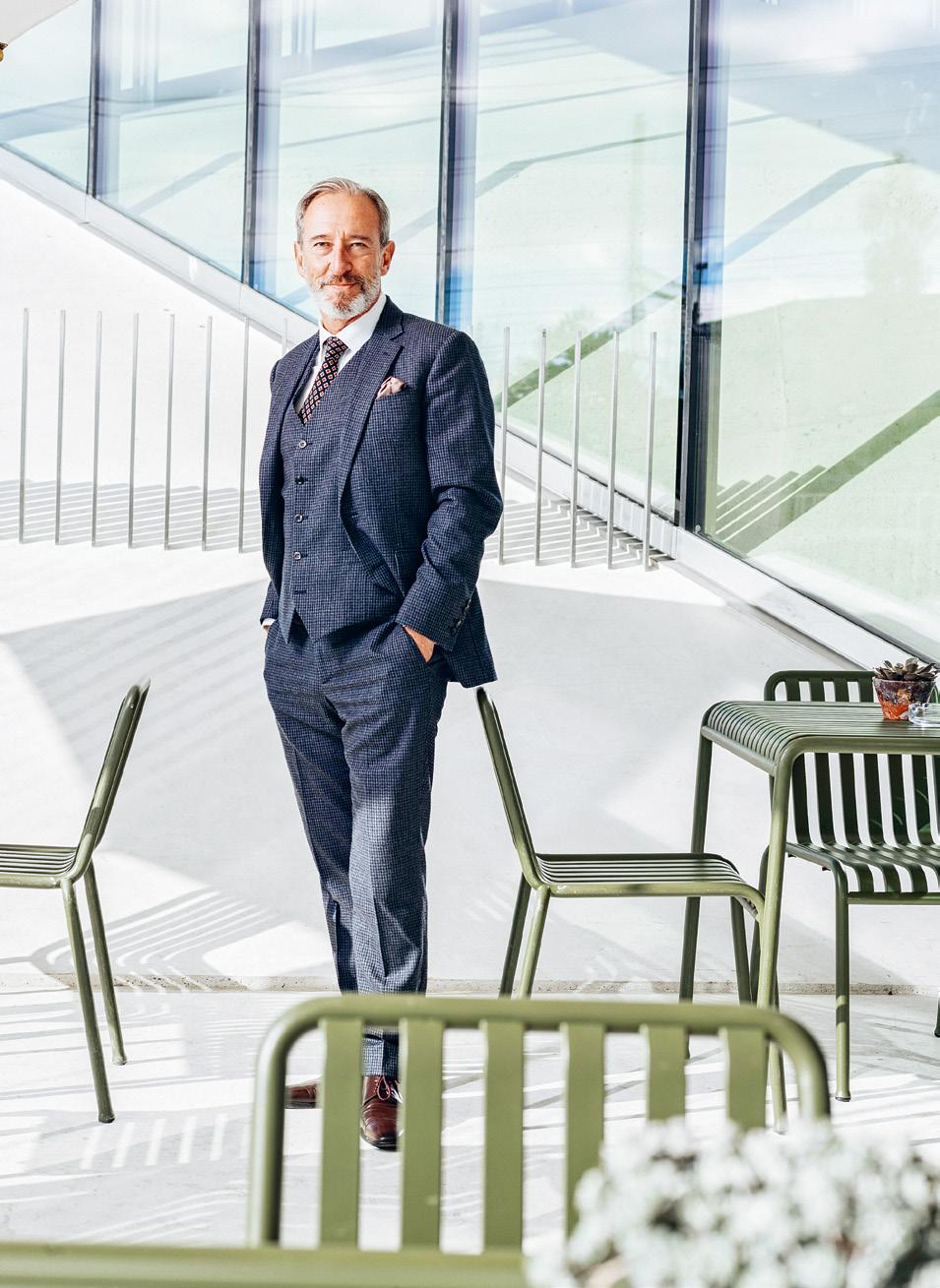
How is Lausanne’s food scene so vibrant?
Knut Schwander: Many places were founded by young urbanites and opened in recent
“The
of good restaurants is greater than anywhere else”
years. Like in London or Paris, they explore gastronomy from a borderless viewpoint and develop the world food approach. Food trucks also bring all sorts of novelties that were previously unknown in Lausanne, even though foreign restaurants have existed in large numbers in the city for at least 25 years. Meanwhile, the classic restaurant industry perpetuates tradition or develops creative cuisine, while exploring vegetarian or even vegan options as well. Generally speaking, we see more dishes where meat is presented as a garnish for the vegetable.
Has the Covid crisis changed the landscape?
Yes. New habits have been formed. People increasingly have food delivered instead of eating out. Many traditional establishments now offer that service. Those who used to live on daily specials have had to review their strategy. Awareness about environmental issues could slow this trend, as it involves a lot of packaging and travel. This green consciousness is already encouraging trends towards locavore and seasonal foods.
How do you explain such a huge offering in a city of this size?
Lausanne’s cosmopolitan and international qualities contribute to that, as does perhaps the rather high standard of living. People who have travelled and experienced flavours elsewhere want to find them once they return to Lausanne. And the influence of EHL Hospitality Business School is also a factor.
There are more good restaurants per square kilometre in the Lake Geneva region than anywhere else!
The greater Lausanne area is like a Swiss Mecca. Frédy Girardet gave the city its international reputation thanks to his restaurant at the Hôtel de Ville in Crissier, which was later taken over by Philippe Rochat, Benoît Violier and now Franck Giovannini. Also worth mentioning is Fleur de Sel in Cossonay, the restaurants of the Lausanne Palace or the Beau-Rivage. The region is also packed with a relevant range of quality places but without being overpriced. You have everything, from a simple bar,
to a neighbourhood bistro, to your friendly Italian restaurant.
You also have a sweet tooth. How does the city cater to the sweet side? There are plenty of options! I love the Confiserie Wuthrich and its famous Giscard chocolates, created in honour of the former French president (see Lausanner issue No. 01 –ed.). The recently renovated Blondel Chocolaterie is also a landmark. There are about 15 good chocolate makers in Lausanne alone.
What about the lakefront?
Ouchy has loads to offer. The restaurant in the Beau-Rivage is home to chef Anne-Sophie Pic. Café Beau-Rivage at this 5-star palace offers more affordable but delicious dishes, in an atmosphere reminiscent of an Italian seaside resort. The area also features more popular restaurants for crepes, Italian or Asian food, as well as trendy spots such as Le Lacustre and La Jetée de la Compagnie. The culinary diversity of this area is like a concentrated form of the vast selection available in the entire city.
L’AUBERGE DE L’ABBAYE DE MONTHERON
Route de l’Abbaye 2, 1053 Montheron
“This must-try restaurant was revamped in 2014 by Spanish chef Rafael Rodriguez. He updates regional recipes with local products near a former Cistercian monastery.”
LE ROSSIGNOL Avenue du Léman 36, Lausanne
“Willy Rossignol, former chef of the Lausanne Palace and the Mirador, whips up Mediterranean dishes using excellent ingredients served with delicious wines, mainly from Lavaux.”
Route de Berne 301, Lausanne
“Rated 16 out of 20 in the Gault&Milau guide, this restaurant is used to teach students of EHL. Not many people know it’s open to the public. It’s worth a visit, because you can discover some fantastic dishes there.”
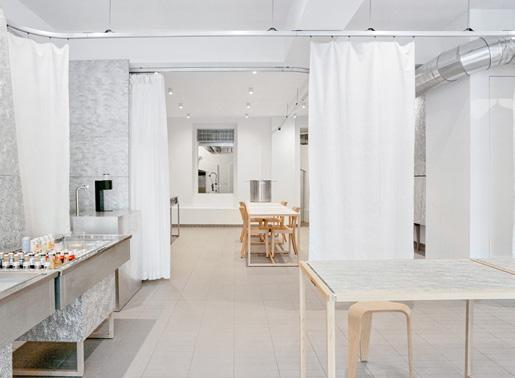
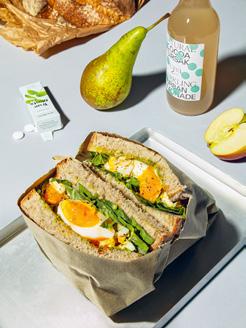
In May, the “creative culinary centre” Deli Social opened on Place du Tunnel through a crowdfunding campaign. Rhys Williams, a Welsh architect and cook who appeared on the show Master Chef, and his partner, designer Emily Groves, are the promoters of this space and its concept, which is a culinary bookshop, workshop and artists’ residence all at once. Almost every day at lunchtime, people can come and try three original sandwiches and desserts, or have them delivered. Its founder describes Deli Social as “the crossroads between artists’ residence and business incubator. The idea is to provide a platform for collective experimentation to generate innovation in the way we eat, but also interactions with design and industry.” In a similar vein is the Cang Tin collective. This non-profit combines food, applied arts and Vietnamese crafts.
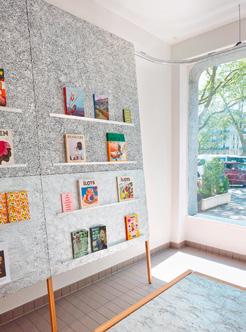
cangtin.ch
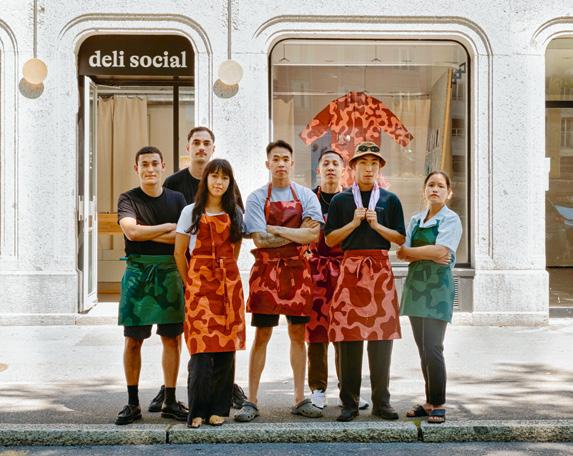
Lausanne à Table is essential for any food lover. Created in 2014 after the Swiss Association de promotion du goût awarded Lausanne the title of Ville du Goût (City of Taste), the organisation “highlights food products and their artisans through events”, as described by critic Pierre Thomas. It brings together 200 local food producers and showcases the city’s culinary diversity through more than 100 gourmet, and often unusual, events organised from mid-May to mid-December. And “there’s something for all tastes”, as their slogan goes. Pop-up tables, relaxed meals at chefs’ homes, open bars, “chasselas
the Swiss Semaine du Goût, based on the French model in 2001 by Vaud natives Josef Zisyadis, Marc Rosset and Pierre Berger, who are also cofounders of the Swiss Association de promotion du goût. The week-long event promotes local products and connects the general public with food industry professionals. It quickly grew nationwide, with several hundred events held across the country every September.
Since 2004, Lausanne has also been home to the organisation Association Patrimoine Culinaire Suisse, which produces a list of more than 400 traditional products from Switzerland’s culinary heritage, detailing their production methods and history.
→ lausanneatable.ch
→ patrimoineculinaire.ch
→ gout.ch
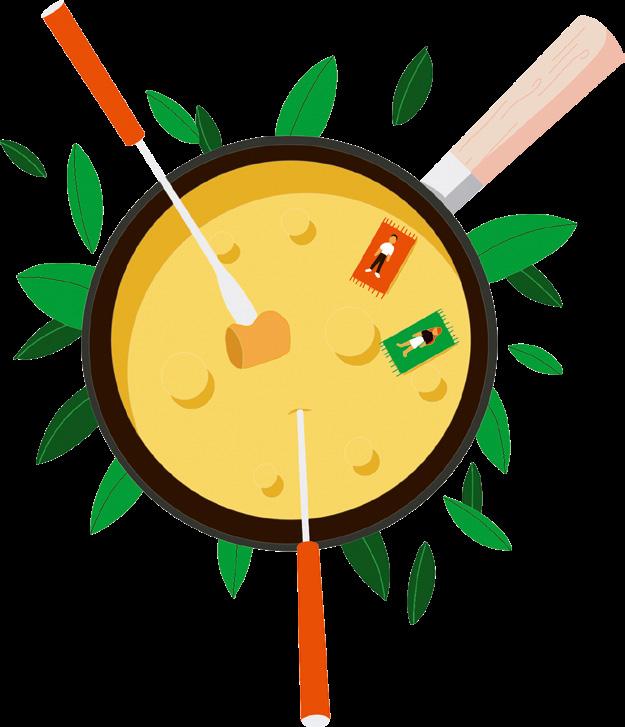
What do places as diverse as Le Pointu and its legendary brunches, the trattoria Un Po’ Di Più, the participatory wine bar Ta Cave, the South American-inspired restaurant and bar Lucha Libre, the Lebanese must Obeirut, burgers at Crrsp, and the speciality coffees at Ça passe crème have in common? They were all started by graduates of the Hospitality Business School (EHL), founded in 1893 and ranked the top international hospitality management schools in the prestigious QS World University Rankings.
These establishments focus on local, quality products, often from organic or sustainable agriculture, and a cosy, original and trendy setting.
“Several trends point to where food is going, mainly local, seasonal and sustainable,” says Patrick Ogheard, Associate Dean of Practical Arts and Co-Director of the Institute of Nutrition R&D at EHL. “As EHL alums, we take advantage of the network we built while at school, our knowledge of the local region and our love of Lausanne,” says Julien Caure, co-founder of the urban concept wine shop Street Cellar.
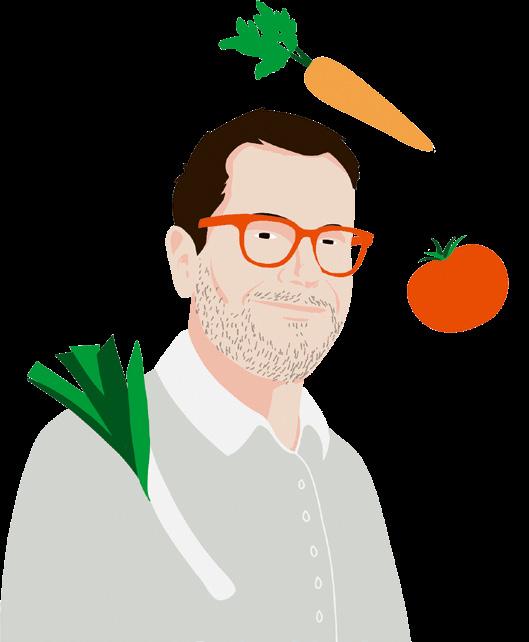
“One-third of our students are interested in becoming entrepreneurs, which is ideal for putting into practice our management DNA and our sense of hospitality,” says Lucile Muller, head of communications at EHL. “Lausanne remains a strategic location that supports a large international student base, and these new, young and original establishments suit them perfectly. They illustrate a stratification of food globalisation,” says food critic Pierre Thomas, co-author of the recent book 111 lieux à Lausanne à ne pas manquer ( “111 must-see spots in Lausanne”)
To get serious about the “zero kilometre” approach, the food lover recommends the two restaurants run by Romano Hasenauer, an EHL graduate and current president of Lausanne à Table (see page 45). “At the Auberge Au Chalet des Enfants, in the middle of an idyllic clearing deep in the Jorat woods, Romano Hasenauer relies on local agriculture. At this Swisstainable Level II-labelled establishment, he prepares locally inspired dishes with products that sometimes come from his 1,000 m2 vegetable garden, which his team and him tend to using permaculture and biodynamics. He has also brought an updated take to boutefas, a large sausage typical of the Vaud region that was recently granted the AOP food protection label. And at the Auberge de Montheron, the first establishment in French-speaking Switzerland to be awarded the Michelin Guide’s green label, he and his chef apply the same locavore philosophy.”
Le Pointu Rue Neuve 2 Lausanne ↓
Renowned for its brunches, it was founded in 2016 by six EHL graduates, who have since also opened the Loxton.
Place de l’Ours 1 Lausanne ↓
Opened in 2019 by three partners, two of whom are EHL alumni, the restaurant showcases Latin cuisine in a welcoming atmosphere.

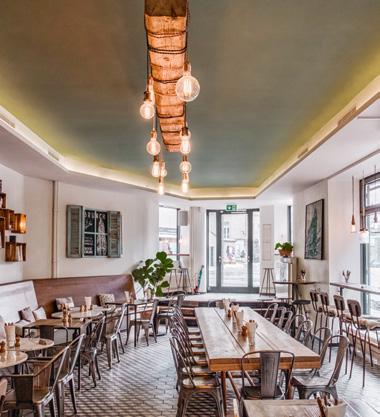
The colourful trattoria, which opened in 2021, has a fantastic terrace. It’s run by three EHL alumni, two of whom are owners of Le Pointu.
Rue du Port-Franc 2a Lausanne ↓
Situated in Le Flon, this wine bar that offers mouth-watering street food since April 2021 – is the creation of two EHL graduates.
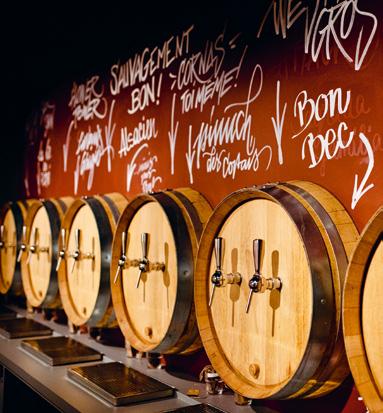
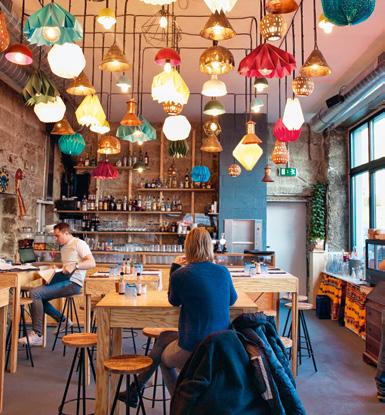 Lucha Libre
Un Po’ Di Più Rue du Tunnel 1 Lausanne
Lucha Libre
Un Po’ Di Più Rue du Tunnel 1 Lausanne
You want to travel around the world without leaving Lausanne? You can, thanks to the many food trucks parked in the city centre every weekday from 11 a.m. to 2 p.m. A literal craze has developed in the past ten years for these rolling restaurants that bring quality to the concept of fast food. They are selected on the basis of calls for tender and applications. Place de la Riponne is the nerve centre of this new way of eating, but you can also find them in Sévelin, Parc de Milan, Grand-Pré and in front of the La Pontaise administrative building. You can delight in the Cameroonian, Iranian or Jamaican specialities, pancakes, bubble tea or Tibetan momos. The list goes on, and is always evolving. “Lausanne hosted the first Food Truck Festival in Frenchspeaking Switzerland in 2015, and it was a huge success. After that, the municipality moved into other places and expanded its offering,” says Elise Rabaey, head of food and events at the City of Lausanne. Every year on Whit Monday weekend in May, the Miam Festival also features food trucks. The event brings together some 50 artisans of taste, an opportunity for visitors to discover in one place the great culinary variety of a city rich with 160 nationalities. In 2017, The Independent ranked the event in its top 10 best street food markets and festivals in Europe!
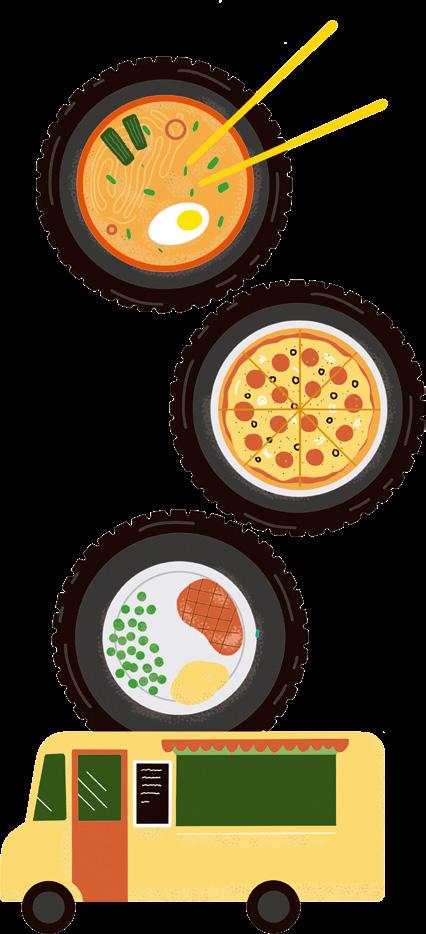
Every two years since 2012, the City designates its official chocolate. With no competition in 2020 due to the pandemic, the lucky winner in 2018, Maison Buet, retained the title of official chocolate of Lausanne until 2022. Its successor was unveiled at the beginning of November: it is the Confiserie Christian Boillat. “Its chocolate will be savoured by the city’s guests until 2024, with 500 to 1,000 boxes supplied each year depending on the events to be held,” says Patrizia Darbellay, who is the City of Lausanne’s coordinator for the competition.

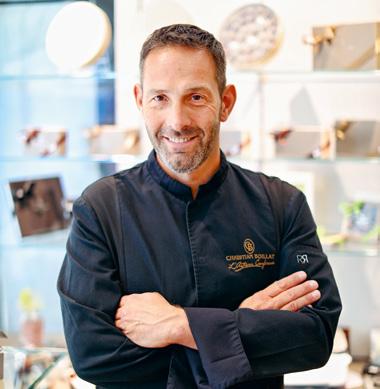
Have you heard of Vuna, the vegan “tuna” found in supermarkets? Have you noticed that Smarties are now wrapped in a special paper? These inventions come from the Nestlé Research Centre (NRC) in Vers-chez-les-Blanc in the heights of Lausanne. The Swiss food giant has centralised its research operations there since 1987, where it currently employs some 800 people from 50 countries. Nutritionists, biochemists, physicists, food technologists, immunologists, computer scientists and other experts collaborate there on
the nutrition, health and food of tomorrow. “We have several Michelin-starred chefs on our team who help translate our discoveries into tasty products. Our basic research, sometimes done in partnership with our Nestlé Institute of Health Sciences at EPFL, always finds concrete applications,” says Nestlé spokesperson Melanie Kohli. “We are working on the whole chain from agriculture to packaging, including the impact of food on health, mobility and cognitive abilities in humans as well as in pets.” In recent years, the NRC
has focused on how best to feed the world for the future, for example studying which plants are most resistant to drought, considering flexitarian diets and looking for alternatives to animal proteins. In the area of innovation, Lausanne also hosts the FoodHack Summit as of this year. This headline event brings together foodtech entrepreneurs from around the world. The next edition is set to take place in May 2023.
FUTUREThe Café du Grütli is one of the 44 establishments in Lausanne that have been awarded the “café historique” label. Interview with its manager, Vanessa Jeanneret.
At 33, this young mother, who did a trade apprenticeship (CFC) in restaurant management and holds a sommelier’s diploma from the École du vin in Changins, a licence and an apprenticeship certificate, is preparing to take over for her parents in running the Grütli and update the institution founded in 1849.
In recent years, hip hotspots – sometimes vegetarian or vegan – have been flourishing. They attract young people and focus mainly, if not completely, on take-away or delivery. For its size, Lausanne is amazingly diverse and modern in terms of food. That’s a good thing! However, many people feel it is time to go back to the roots of nearly forgotten local food traditions. Covid created new challenges in the industry. Recruiting and retaining skilled personnel has become difficult.

What do you think of the current food scene in Lausanne?
I can see this clearly as a member of the Gastro Lausanne committee. Fortunately, business is going well, and customer numbers returned to normal levels this summer.
Everything (laughs). Mostly, managing our 12 employees. Four to six of them are in the kitchen to prepare our dishes on order, and creating a quite extensive wine list that surprises many customers. We put priority on good seasonal products from our region. That way, we can serve them to our customers with as few intermediaries as possible. We take pleasure in introducing our customers to small local producers. On Wednesdays and Saturdays, we’re lucky enough to be able to go to the market and be in direct contact with our suppliers. Our meat comes from the Grisons. My uncle goes there specifically for that reason every year. When I took over the Grütli, I wanted to bring in some excitement, but without changing everything either. The three gondolas set
up in front of our restaurant every year since the 2020 Winter Youth Olympics, which seat four people for a fondue, illustrate this gentle shift.
I always said I would never do this job (laughs) ! When I was a child, I felt that the restaurant was stealing my parents away from me. My older sister and I often ate there while our grandparents were taking care of us. The smell of the cheese dishes – and of the old cigarettes back in those days –left a lasting impression on me. But after school, I ended up getting into the business too. Maybe I wanted to make up for lost time, because I now work with my parents.
Café du Grütli
Rue de la Mercerie 4, Lausanne cafedugruetli.ch
LE 57° Place du Port, Lausanne
“This rôtisserie restaurant, located in the Château d’Ouchy, is one of the best places in town to enjoy excellent red and white meat.”
Grand-Rue 48, Lutry
“I like to relax here on Sundays after the work week. The Lake Geneva perch fillets are delicious, especially when you eat them on a magnificent terrace right on the water!”
UME Route de Berne 285, Épalinges
“This Asian restaurant doesn’t look like much. But the sushi is incredible. I go there regularly. It’s a pleasant change from the traditional products at the Grütli.”
They were here before us and will be here after us. These institutions are steeped in history and have been delighting customers for generations. Lausanne has no less than 44 such establishments, including the Grütli, the Brasserie Bavaria or the Café Romand and its famous papet vaudois. The City of Lausanne introduced the “café historique” (historical café) label in 2021. To obtain
the label, two criteria must be met: age (over 50 years old) and decor authenticity. Owners are therefore encouraged to preserve the soul of these places and keep them in touch with today’s world. Their story is told in the book Cafés et restaurants historiques de Lausanne (“Historic Cafés and Restaurants of Lausanne”), published by Favre in May 2022. In it, we learn that Pinte Besson on Rue de l’Ale, renowned for its fondue, is almost 250 years old. We also find out that before gracing
the Bois de Sauvabelin, Chalet Suisse served its delicious Swiss cheese dishes at the 1958 World Expo in Brussels. Or that the restaurant Au Chat Noir, opened in 1897, was named after its “big brother”, the famous Chat Noir in the Montmartre district of Paris. In fact, the famous illustration of the Parisian bistro, as well as the logo of the Chat Noir in Lausanne, was created by the Lausanne artist Théophile Alexandre Steinlen, who died one century ago, in 1923.
Take a stroll through these unique, hidden gems and listen to eccentric tales about them in the heart of the Olympic Capital.
By Alice CasparyA five-ton door, age-old fossils, mysterious pliers... Brimming with curiosities, Lausanne never ceases to captivate, visitors and locals alike. Its emblematic buildings may be famous, but the city’s charm also lies in its details and offbeat sights. If you look up or stand from a different angle, what you thought you knew changes. “You can find something unusual even in a street you already know. The city’s many sloping paths offer surprising viewpoints,” says Lausanne resident Pierre Corajoud, author of numerous walking guides. That is the basis for this walk dotted with unique stops: slowing down to look at the city in a new way.
We begin our walk at Place de la Palud to watch the square’s famous talking clock come to life. Every hour at the top of the hour from 9 a.m. to 7 p.m. it recounts highlights from Vaud’s history (see Lausanner issue No. 08). Facing the Fontaine de la Justice (see pages 16-17), the work by recently deceased artist Pascal Besson began ticking in April 1964 and, among other historical facts, gives listeners an account of Major Davel’s attempt to free the canton from Bernese rule on 31 March 1723.
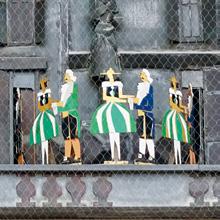
Walking up to Place de la Riponne, on our left is the large Inovil car park. From a window on the third level of the car park is the only place in the city where you can still glimpse the Louve River. The waterway was covered in the 19th century for health reasons, like the Flon, which also flows under Lausanne.
On Place de la Riponne, we’ll try to find the pliers stuck in one of the 142,430 concrete cobblestones laid in 1973. The forgotten, now fossilised tool has intrigued people for half a century. Who did it belong to? Why were they left there? On purpose or by accident? The curiosity is both disturbing and delightful. A group of authors has even devoted a whole book to it, La Pince du pavé (“The Pliers in the Cobblestone”), published in 2016 by Éditions limitées.
Opposite, at the Palais de Rumine, another Lausanne curiosity is located at the end of the north terrace: a five-ton reinforced door. According to the guidebook Le Palais de Rumine by Bruno Corthésy, the door is a vestige that was used to contain the hot water that broke through during the drilling work for the Simplon tunnel.
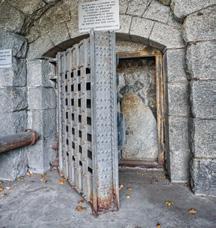
So how did it end up in Lausanne? It was a gift to the State of Vaud from the tunnelling company at the end of the vast worksite in 1906, the year the Palais de Rumine opened. Its current location was designed by the building architect Gaspard André. “The inauguration of the Simplon tunnel was a huge event. That is also when Place de Milan got its name, as the tunnel provided a train link between Lausanne and the Italian city,” says Nathalie Nini Rey, a guide from Lausanne.
Next we take the stairs along The Great Escape bar. After the pedestrian crossing, we walk up the Escaliers du Marché, the winding, sloping wooden staircase dating back to 1717-1719. Once in La Cité, at the bottom of the Cité-Devant building just past the 1797 fountain, we find shells, fossilised millions of years ago, in the sandstone, which was originally extracted from the north of the canton of Vaud.
After crossing Pont Bessières, we quickly reach Parc de Mon-Repos. Opened in the 18th century when the land was covered in vines, this English-style park is a showcase of greenery. With its aristocratic-style flowerbeds, ponds, fountains and exotic birds, Mon-Repos is one of the city’s best-known parks. We then walk further up, to the left of the stately Federal Supreme Court. Works by sculptor Yves Dana greet you in front of the former Orangery, which the artist uses as a studio. A unique place in its own right, dating from 1822. →
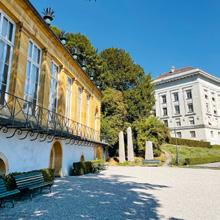
In the hamlet of the forest, we listen for the waterfall. On the left, an entrance hidden by the vegetation leads to a magical place that is rich in history: the ruins of the Mon-Repos Belvedere Tower and its waterfall. Continuing our exploration, we arrive at the Coupole de Mon-Repos (behind the Temple de Béthusy), where we soak in the breathtaking view of the southern part of the city.
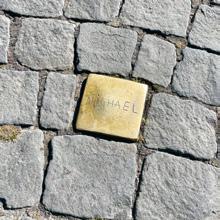
Leaving the park, we take Rue de Bourg to Place Saint-François. To the north of the eponymous reformed church, the ground sparkles with a constellation of gold-coloured paving stones inscribed with the names of the 52 children born in Lausanne on a full moon in 1998. The brass squares seem to have sprung out of the half-circle shaped fountain, which completes this work created by artists Anne-Hélène Darbellay and Yves Zbinden. Unveiled in 1999, the piece symbolises water as the source of life.
We continue on Avenue Jules Gonin to Esplanade de Montbenon. As we cross the park, we see the Chapelle de Guillaume Tell in front of the Casino (which, incidentally, has never seen any gambling since it opened in 1908. Today, it is home to the Brasserie de Montbenon and two performance venues). The votive structure was built between 1913 and 1915. Three frescoes by Ernest Biéler, restored in 1955, depict the most famous stories from the life of the Swiss national hero.
We go down to Sous-Gare and take the Coulée verte (green belt), a gently sloping tree-lined path opened in 2008, which will take us from Boulevard de Grancy to Ouchy. Alternatively, we can take the metro along this stretch, as the 10,000 m2 of greenery covers the M2 metro. This green path is also called the Promenade de la Ficelle, named after the little rack train line, which existed long before the metro to link Ouchy to Flon from June 1877 to January 2006.
On Quai JeanPascal Delamuraz in Ouchy, relief sculptures depict three donkey heads drinking from a fountain, with the inscription “En souvenir de l’Académie d’Ouchy” (In memory of the Academy of Ouchy). Donated to the city from artist Édouard-Marcel Sandoz in 1937, the work pays tribute to the equine animals. Before the Ficelle opened in 1877, donkeys transported the stones and materials used to build the city from the shores of the lake to the still rocky slope of the future Avenue d’Ouchy. As they passed, locals would snigger: “Here comes the Academy of Ouchy!”
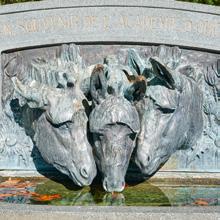
We walk east along the Ouchy lakefront promenade to the Parc du Denantou, where we find the Thai pavilion. This gift to the City of Lausanne from the late King of Thailand Bhumibol Adulyadej, who lived in Switzerland until 1951, was inaugurated in 2005 in the presence of his daughter, Her Royal Highness Maha Chakri Sirindhorn. On 14 September 2022, the princess returned to Denatou for the unveiling ceremony of a bust of her father. Not far on the grass, an ancient tree stands majestically. A favourite of Pierre Corajoud, who said of it, “It has an impressive trunk, typical of hornbeams, all thick, gnarled and robust. I really love it, because it comes from our countryside.”
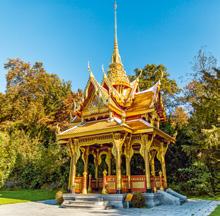
We walk a few metres to reach the mouth of the Vuachère in Ouchy and admire the fake ruin of the Haldimand Tower. It was built in 1821 in the neo-Gothic style, which was fashionable during the Romantic period. This imitation Gothic tower features walls in molasse rock and a base in tuff. At the end of this walk through some of the unique sights in Lausanne, the words of the author Pierre Corajoud linger: “The more you know certain cities, the more you may want to find out about them.” ■
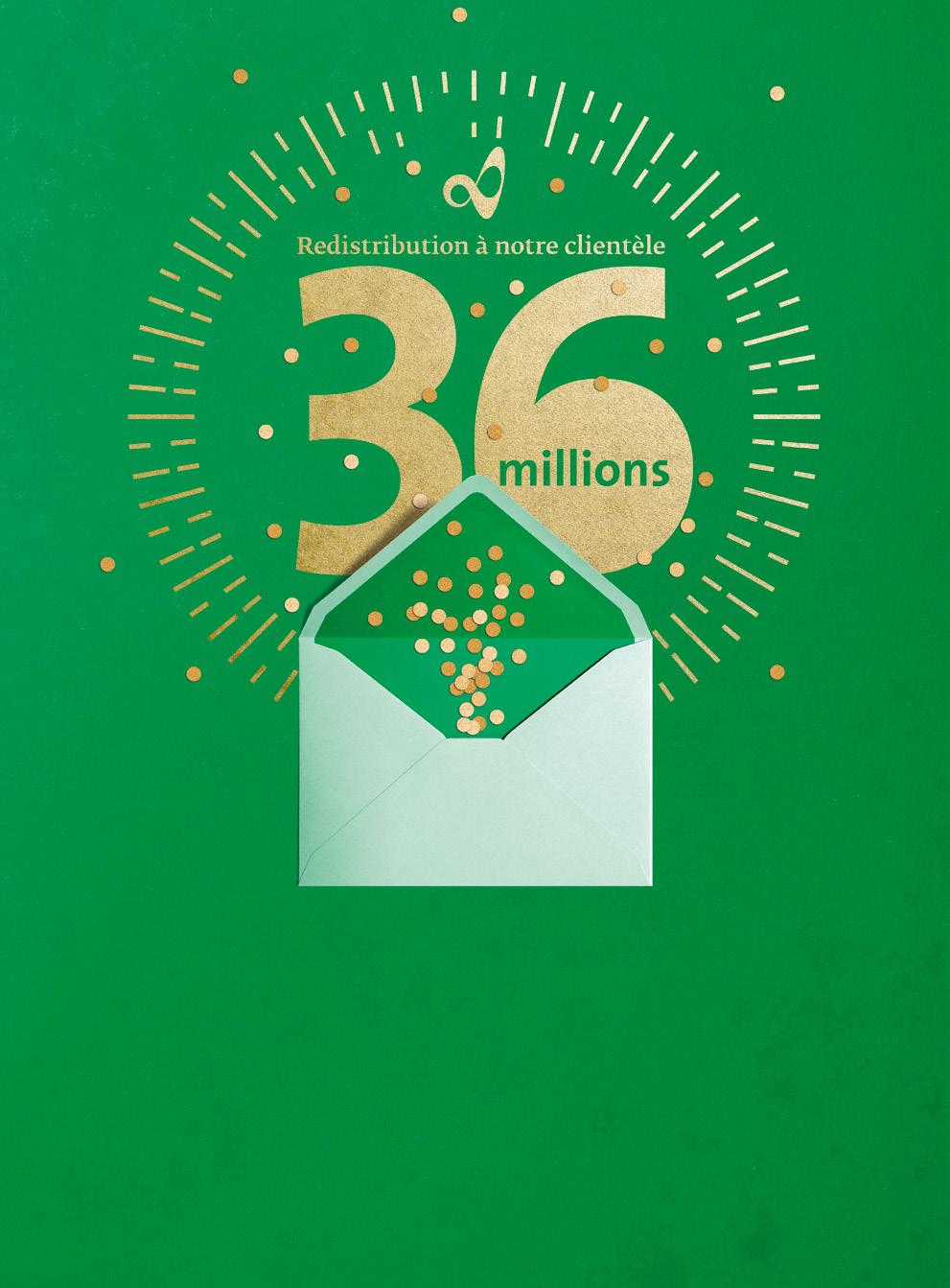
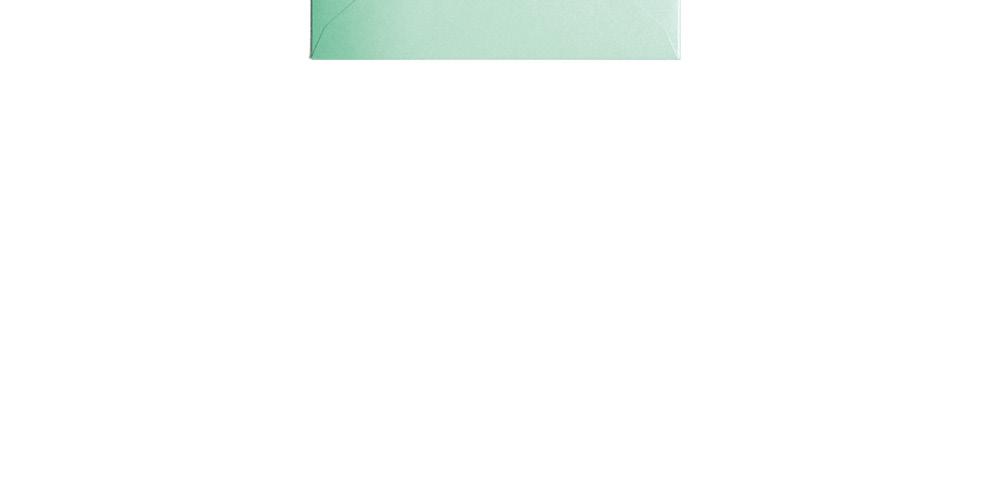
1 57° Grill
Place du Port 1006 Lausanne
2 Anne-Sophie Pic (Beau-Rivage Palace) Place du Port 17-19 1006 Lausanne
3 Au Chat Noir Rue Beau-Séjour 27 1003 Lausanne
4 Auberge de l’Abbaye de Montheron Route de l’Abbaye 2 1053 Montheron
5 Auberge du Chalet des Enfants Route du Chalet-des-Enfants 1052 Le Mont-sur-Lausanne
6 Bamee Bar Avenue de la Gare 32 1003 Lausanne
7 Bar Tabac Rue Beau-Séjour 7 1003 Lausanne
8 Blackbird Downtown Diner Route de Bel-Air 1 1003 Lausanne
9 Bondi Empanadas Rue des Côtes-de-Montbenon 5 1003 Lausanne
10 Brasserie du Château Place du Tunnel 1 1005 Lausanne
11 Ça passe crème ! Boulevard de Grancy 49 1006 Lausanne
12 Café de Grancy Avenue du Rond-Point 1 1006 Lausanne
13 Café de la Poste Grand-Rue 48 1095 Lutry
14 Café du Grütli Rue de la Mercerie 4 1003 Lausanne
15 Café Romand Place Saint-François 2 1003 Lausanne
16 CRRSP Chemin de Prévenoge 2 1024 Écublens
17 Dalat Place du Vallon 5 1005 Lausanne
18 Deli Social Place du Tunnel 11 1005 Lausanne
19 Hungry Bear Food Rue du Simplon 3 B 1006 Lausanne
20 La Bavaria Rue du Petit-Chêne 10 1003 Lausanne
21 La Couronne d’Or Rue des Deux-Marchés 13 1005 Lausanne
22 La Fleur de Sel Rue du Temple 10 1304 Cossonay
23 La Galette Rue Louis-Auguste Curtat 13 1005 Lausanne
24 La Jetée de la Compagnie Jetée de la Compagnie 1007 Lausanne
25 La Pinte Besson Rue de l’Ale 4 1003 Lausanne
26 La Table du Lausanne Palace Rue du Grand-Chêne 7-9 1002 Lausanne
27 Le Berceau des Sens (EHL) Route de Berne 301 1000 Lausanne 25
28 Le Chalet Suisse Route du Signal 40 1018 Lausanne
29 Le Kiosque Saint-François Place Saint-François 13 1003 Lausanne
30 Le Milan Boulevard de Grancy 54 1006 Lausanne
31 Le Montriond Avenue Édouard Dapples 25 1006 Lausanne
32 Le Perchoir Rooftop-Bar Route de Praz Véguey 29 1022 Chavannes-près-Renens
33 Le Pointu Rue Neuve 2 1003 Lausanne
34 Le Rossignol Avenue du Léman 36 1005 Lausanne
35 Lucha Libre Place de l’Ours 1 1005 Lausanne
36 Obeirut Rue Belle-Fontaine 2 1003 Lausanne
37 Ordinary Man Rue du Petit-Chêne 28 1003 Lausanne
38 Restaurant de l’Hôtel de Ville Rue d’Yverdon 1 1023 Crissier
39 Street Cellar Rue du Port-Franc 2 A 1003 Lausanne
40 Ta Cave Rue du Simplon 35 1006 Lausanne
41 The Lacustre Quai Jean-Pascal Delamuraz 1 1006 Lausanne
42 Ume Route de Berne 285 1066 Épalinges
43 Un Po’ Di Più Rue du Tunnel 1 1005 Lausanne
44 Atelier Sonja T. Rue du Simplon 9 1006 Lausanne
45 Boutique Photo Élysée et mudac Place de la Gare 17 1003 Lausanne
46 Chabada Vintage Rue Cheneau-de-Bourg 4 1003 Lausanne
47 Confiserie Christian Boillat Rue Enning 4 1003 Lausanne Place de la Navigation 18 1006 Lausanne
48 Finest Vintage Rue Caroline 5 1003 Lausanne
49 Fripsquare Avenue Édouard Dapples 15 bis 1006 Lausanne
50 La Chouquette Avenue de Rumine 4 1005 Lausanne
51 La Louve Friperie Rue de la Louve 3 1003 Lausanne
52 Laboratoi/RE Rue de la Mercerie 16 1003 Lausanne
53 Le Cercle du Thé Rue Grand-Saint-Jean 1 1003 Lausanne
54 Le Dressing Avenue des Alpes 3 1006 Lausanne
55 Les Patronnes Rue du Valentin 43 1004 Lausanne
56 Maison Buet Rue Grand-Saint-Jean 6 1003 Lausanne
57 Saveur PimenThé Rue Madeleine 5 1003 Lausanne
58 Tekoe
Rue Centrale 5 et place de la Gare 9 1003 Lausanne
59 ThéTeaTee Rue Enning 4 1003 Lausanne
60
Throwback Vintage Avenue de Beaulieu 7 1004 Lausanne
61 Collection de l’Art Brut Avenue des Bergières 11 1004 Lausanne
62 Musée de la Machine à écrire Rue des Terreaux 18b 1003 Lausanne
63 Musée romain de Lausanne-Vidy Chemin du Bois-de-Vaux 24 1007 Lausanne
64 Palais de Rumine Place de la Riponne 6 1005 Lausanne
65 Plateforme 10 Place de la Gare 16-17 1003 Lausanne
66 Axers Chemin des Lentillières 5 G 1023 Crissier
67 Beat Fitness Rue du Simplon 47 1006 Lausanne
68 Cobalt Project Route de la Claieaux-Moines 324 1090 Lutry
69 Colore Ta Vie Chemin de Montolivet 19 1006 Lausanne
70 Swiss Bubble Foot FC Saint-Sulpice, chemin du Laviau 1025 Saint-Sulpice
71 The Jump Spot Rue de Genève 103 1004 Lausanne
72 World Archery Excellence Center Chemin du Chalet Pra Roman 12 1000 Lausanne 25
73 Le Bourg Rue de Bourg 51 1003 Lausanne
74 Théâtre de Beaulieu Avenue des Bergières 10 1004 Lausanne
Gare Lausanne-CFF Place de la Gare 1003 Lausanne
Transports publics lausannois (tl)
m1 Metro
m2 Metro
TOWN CENTRE/ RÔTILLON/FLON CITÉ – MON-REPOS
TRAIN STATION – OUCHY SAUVABELIN PULLY
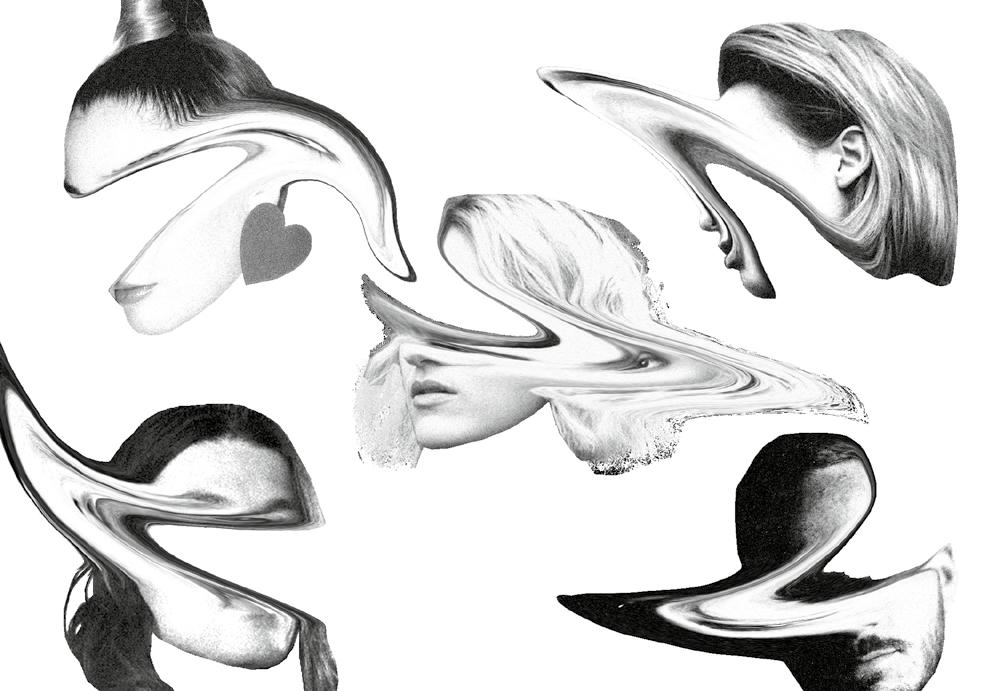
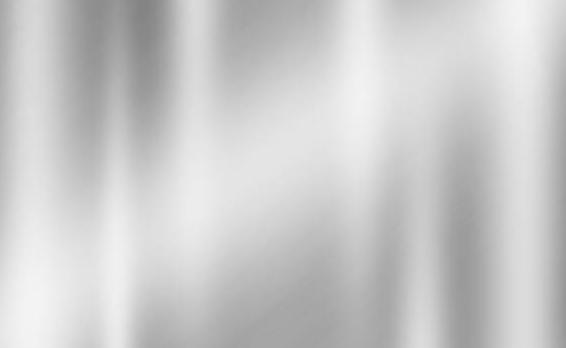
It is around the Cité hill, sculpted by the Flon and Louve rivers, that the medieval town grew.
Its cobble-stoned pedestrian streets as well as its monuments bear witness to this. Then, as soon as you cross the Bessières Bridge, the scenery changes completely. The Caroline district possesses a shopping mall, many bars, restaurants and boutiques. A bit further to the east, the Mon-Repos Park offers a green and tranquil haven, interrupted from time to time by the twittering of birds in its aviary.

The Cathedral, considered one of the most beautiful Gothic buildings in Switzerland, was consecrated in 1275. Don’t miss the rose window, the painted portal, the 13th-century choir stalls, the ancient and modern stained glass windows and the great organs. The bravest will admire the panoramic view from the belfry (entrance fee) after climbing the 224 stairs. Open tours of the Cathedral and free guided tours during the summer.
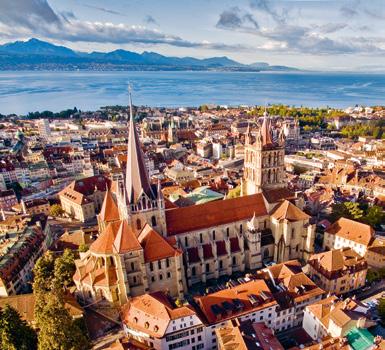
Within the walls of the Old Bishop’s Palace, this Lausanne historical museum speaks of the town’s rich past and features a famous model that offers an exceptional view of the 17th-century Cité. Temporary exhibitions, inspired by the research conducted on its collections, explore the thousand years of this heritage. A novel approach to the town’s history: smart multimedia!
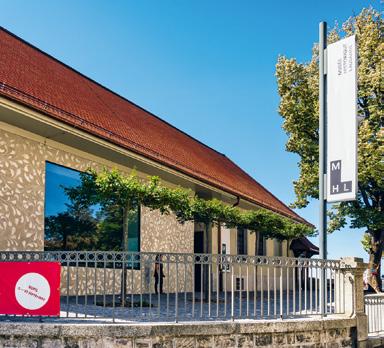
A direct but abrupt route between the Cathedral and the town centre, this wooden stairway first mentioned during the 13th century exists in its present form since the beginning of the 18th century:
roofed and winding, with a very steep cobbled street running alongside. An integral part of Lausanne’s popular iconography, it is lined on the west with a picturesque row of boutiques and cafés.

Open to the public, it’s one of the most popular parks for Lausanne inhabitants of all ages, with its huge lawns, aviaries of exotic birds, playgrounds and ephemeral sculptures.

Stroll down its various alleys to catch a glimpse of an orangery as well as a neo-Gothic tower overlooking a cave and a waterfall.
This
From ancient buildings to trendy new districts, tread the cobblestones and broad avenues to make the most of shopping amongst major brands and local designers. It’s also the axis of nightlife with concert halls and an opera, plus bars and clubs that will keep you awake until the early hours of the morning.
Lausanne’s residents like to meet up in this central square dominated by a mediaeval church that has become a hub for music and dialogue with contemporary art in all its guises. The square welcomes every Wednesday and Saturday morning the famous market stands of Lausanne.
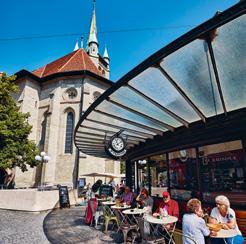
is where the city’s energy is most animated both by day and night.
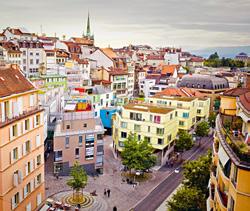
In the intertwining lanes of one of Lausanne’s oldest neighbourhoods that was recently renovated, works of art, a Titeuf fresco, small, original shops and bohemian cafés now attract the trendy crowds. One of the trendy new neighbourhoods in Lausanne, the Rôtillon feels like a corner of Italy in the heart of the town.
A polychrome statue, symbolising justice, stands imposingly on the Renaissance fountain in the centre of this pedestrian square, where the Town Hall is also located. Opposite, tourists and children wait, every hour on the hour from 9 am to 7 pm, for the ballet of animated figures to the sound of the carillon.
Erected at the end of the 19 th century on the Place de la Riponne, this Italianatestyle building houses a host of treasures in its various museums of science, such as the largest naturalised great white shark.
It’s the town’s architectural success: this district of former warehouses that begins at the Place de l’Europe was rehabilitated as a living area with a wide array of restaurants, bars, clubs, boutiques, cinemas and exhibition spaces. A must is to enjoy a drink on one of the rooftop terraces.

Making the most of one of the town’s most beautiful openings on Lake Geneva and the Alps, you can lounge on the lawns in front of the District Court, where there is a statue of William Tell, Switzerland’s mythical hero.
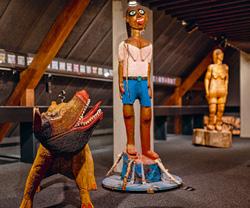
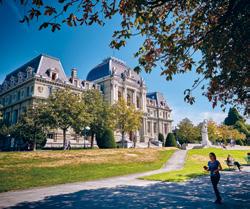
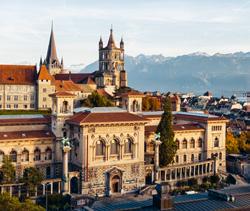
The town created this museum, unique in the world, in 1976 in exchange for the legacy of 5,000 works of outsider art belonging to artist Jean Dubuffet. Located opposite the Beaulieu Palace, this institution today owns over 70,000 works, 700 of which are displayed permanently, and exports its exhibitions all over the world.
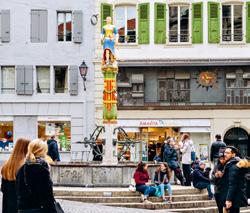














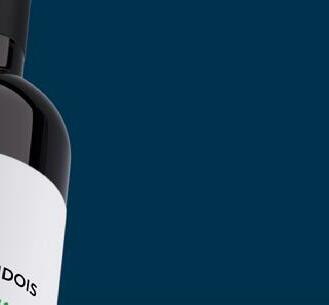
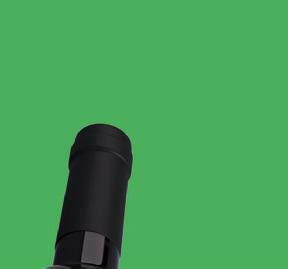


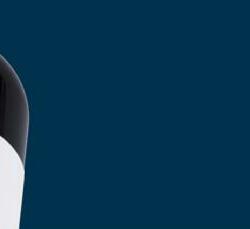


The neighbourhoods located between the Ouchy quays, by the lakeside, and the Lausanne train station are perfect for a revitalising stroll.
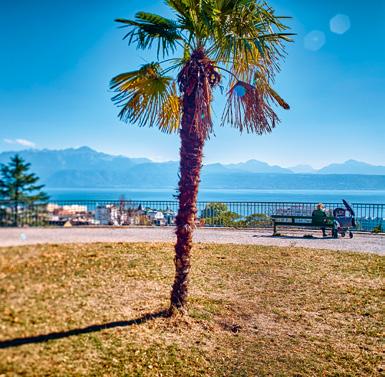
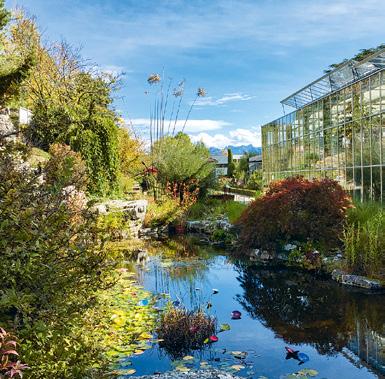
They unveil several green oases, elegant Belle Époque dwellings bordering broad avenues and four internationally renowned museums. Since 2008, the rubber-tired m2 metro has replaced the “Ficelle” (the “String”), which was, in 1877, one of the first metropolitan railways in the world.
Inagurated at the end of the 19 th century, this square’s vast lawns, football fields, playgrounds, fountain and shady alley draw in families in all seasons. Reach the Crêt de Montriond by a winding path to discover a 360° panorama of the Lavaux vineyards, Lake Geneva and Alps.
This magnificent place, overflowing with flowers and great trees, is located at the foot of the Montriond Hill, a stone’s throw from Milan Park. You can admire close to 4,000 plant species from all over the world. Alpine, medicinal, carnivorous and tropical plants have been brought together in this haven of greenery in the heart of town. The botanical museum organises scientific and artistic exhibitions during the year.
OUR CHEF PAOLO PRINCIPE AND HIS BRIGADE INVITE YOU TO SHARE A GOURMET MOMENT, TOPPED WITH LAUSANNE’S HISTORY.
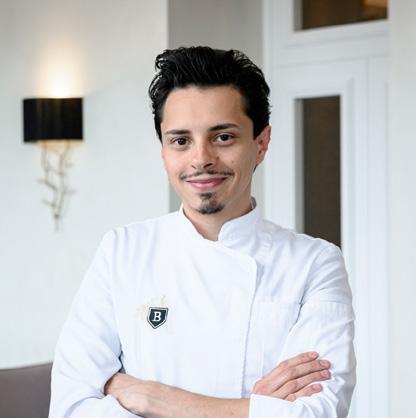
Discover our new menu every season. Tasty and creative dishes at the heart of the historical Royal Savoy.
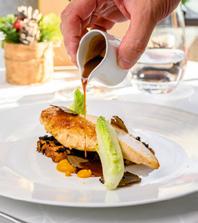
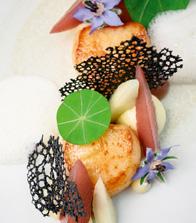
Royal Savoy Hotel & Spa Lausanne Avenue d’Ouchy 40 1006 Lausanne
T. +41 (0)21 614 88 88 info@royalsavoylausanne.com www.royalsavoylausanne.com
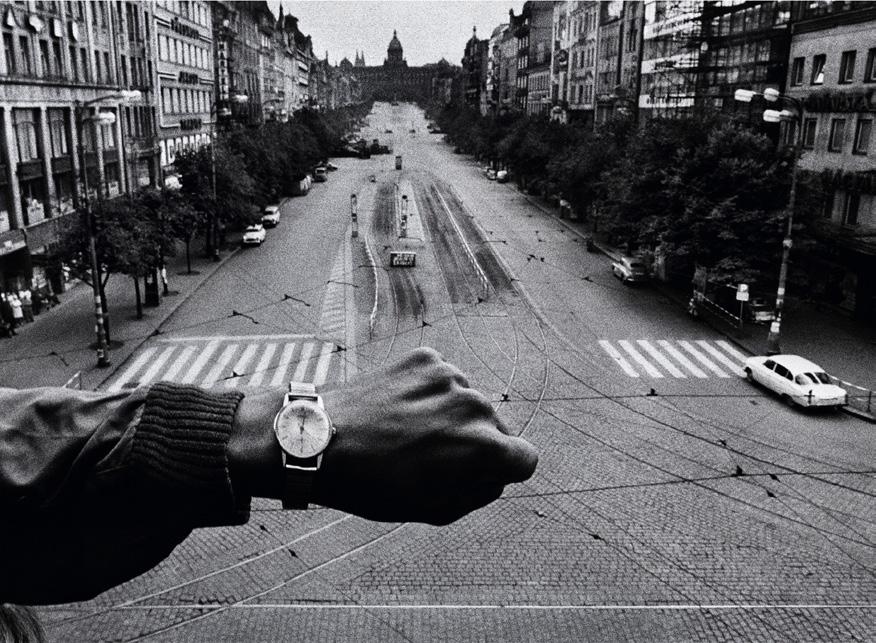
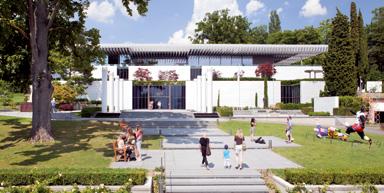
Unique in the world, the Olympic Museum forms Lausanne’s main cultural attraction. Each of its three levels is dedicated to a particular aspect of modern Olympism, largely featuring new interactive communication media. You may need several visits to explore everything. In any case, a pause at the TOM Café is welcome, with its terrace on the uppermost floor that offers a splendid view of Lake Geneva and the Alps. In the park, admire the collection of sculptures and test your speed on a proper running track. Strolling through the landscaped terraces, you’ll reach the monument on the shores of the lake.
Initially privately held, until opened to the public in 1928, this park was laid out during the 19 th century in the English fashion by a banker. Allow your children to caper about in the wild meadows surrounded by copses, flower bed displays and statues, or to play with the water from the pond. Since 2007, a Thai pavilion with a golden roof adorns this green area; it was given to the town by His Majesty the late King of Thailand in gratitude for the years he spent in Lausanne between 1933 and 1951.
For a romantic or gourmet cruise, or simply to cross Lake Geneva, the steamships of the Compagnie Générale de Navigation (CGN) are a must do during your holidays in western Switzerland. Step aboard in Lausanne-Ouchy and sail for instance to Chillon Castle or admire the terraced vineyards of Lavaux, always with the Alps as a backdrop.
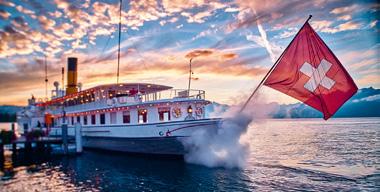
On foot, on a bike or on roller-skates, follow the shores of Lake Geneva from the Old Port to the Haldimand Tower. You’ll discover no less than three major Lausanne parks along your way: the Élysée, the Olympic Park and Park Denantou, as well as the Place du Général Guisan’s rose garden that contains more than 130 different varieties of roses.
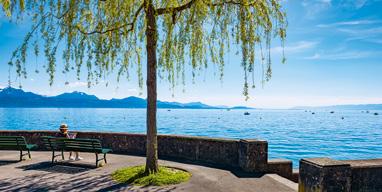
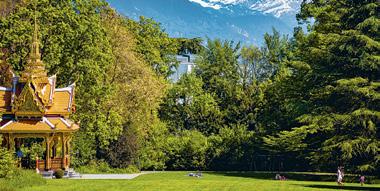
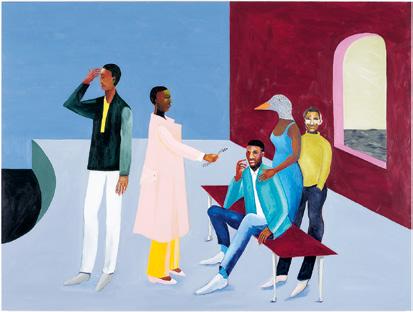
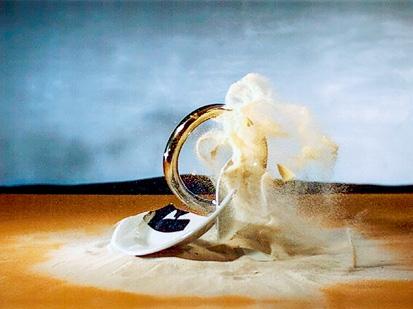

This new arts quarter, one of its kind in Switzerland, is located right next to the train station and is home to three internationally renowned museums: the MCBA, Photo Élysée and the mudac.
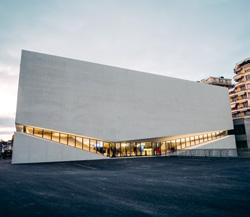
This new cultural platform brings together fine arts, photography, contemporary arts and design complemented by the presence of the Toms Pauli and Félix Vallotton Foundations. A welcoming and relaxing venue with catering facilities, its architectural design and the quarter’s atmosphere create a unique urban, modern and lively space.
Inaugurated in 1841, the MCBA is one of the oldest museums in Switzerland to be dedicated exclusively to art. Ducros, Gleyre, Steinlen, Vallotton and Soutter are all Vaud painters who have established the reputation of the Vaud Museum of Fine Arts, both nationally and internationally. Their works make up a large part of the museum’s collection, that comprises close to 11,000 canvases. The brick building with its monolithic shape pays tribute to the history of the site, which housed the old locomotives’ depot.
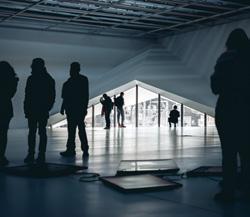
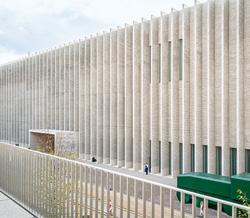
Photo Elysée is one of the major museums entirely dedicated to the photographic medium. It addresses the medium’s constant reinvention through the great figures that have left their mark on its history by imagining new ways of seeing or being seen, while revealing emerging photography in a privileged manner. The museum is also the custodian of a unique collection and of several photographic funds, among which those of Charlie Chaplin, Sabine Weiss and Jan Groover.
Resolutely contemporary, the mudac is interested in all forms of design and loves to build bridges between styles. Design, graphics, fashion: the museum challenges accepted notions and casts a fresh eye on art. In its permanent space, it presents the most important collection of contemporary glass art in Switzerland and Europe. As for the temporary exhibitions, they always go where we least expect them to, highlighting in turn ceramics, furniture, as well as media and jewellery.
The western part of Lausanne is dominated by the university campus that includes the University and the Federal Institute of Technology.
A location close to the lakeside loved by the 28,000 students who can take part in a broad array of nautical sports.
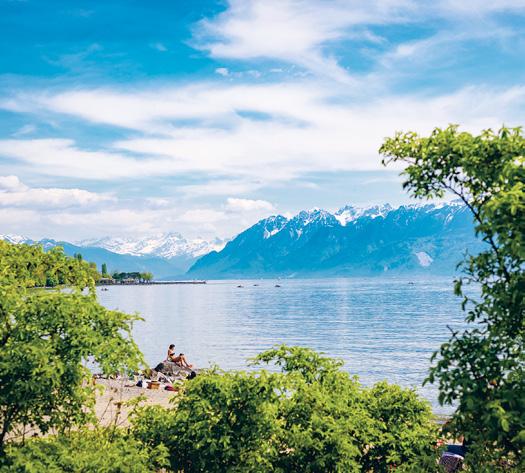
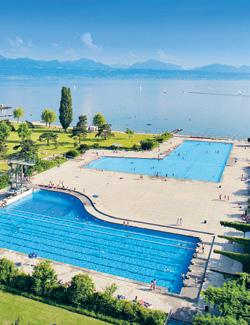
This outdoor swimming pool is equipped with large pools, up to 10-metre diving boards and fun paddling pools for children. Would you rather chill out? Lounge on the large lawns or on the (supervised) beach with direct access to the lake. Restaurants and refreshment stalls on the spot. Next to the pool, the Bellerive crazy golf is an invitation to playful relaxation ideal for families or friends.
Between shoreline forest and meadows, the Louis-Bourget Park is a nature reserve that hosts a bird sanctuary, a pond bordered with fireflies, a fitness trail and a large playground. It’s also an ideal destination for hot summer evenings: come and use the barbecues and grills set on the lawns before enjoying a game of football or relaxing on Vidy beach! You’ll also meet many walkers strolling on the pleasant path that runs along the lakeside.
With its shape inspired by the movement of an athlete, Olympic House is one of the most sustainable buildings in the world. Designed to reflect the IOC’s overarching mission to make the world a better place through sport, it brings together the entire staff of the IOC – that is 500 employees –under one roof. (Closed to the public.)
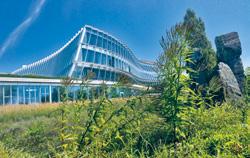
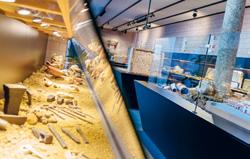
The Lausanne-Vidy Roman Museum offers a presentation of the Gallo-Roman Lousonna (Lausanne), as well as various temporary exhibitions. In a bucolic setting that blends greenery, a body of water and ruins, don’t miss the walk around the remains of the Lousonna vicus (village) dating from 15 BC, one of the largest in Switzerland.
Are your children budding scientists? The Invention Space is a place for them! Housed in a strange building with a concave roof dating from the National Exhibition, its vocation is to arouse young people’s interest in science and technique thanks to interactive and entertaining exhibitions that are regularly renewed.
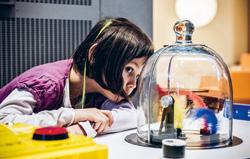
The university campus includes the Lausanne Federal Institute of Technology and Lausanne University, the first buildings of which were erected in the 1970s. Since then, the site has rapidly expanded and integrated buildings, the architecture of which is admired beyond Swiss borders. It’s the case of the Rolex Learning Center’s gentle undulations, created by the Japanese architecture firm SANAA, that serves as a place of learning, meeting and exchanges, and includes a library housing more than 500,000 volumes.
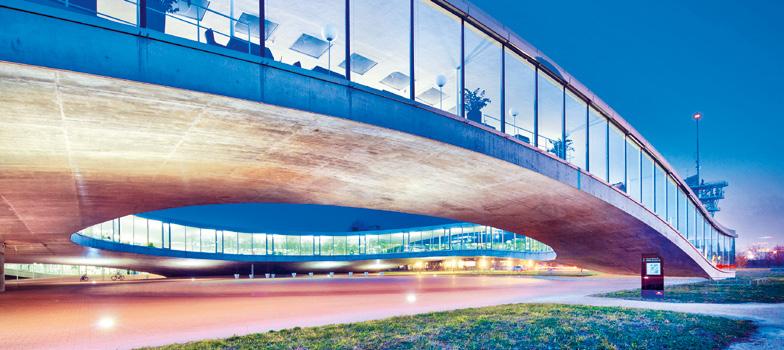
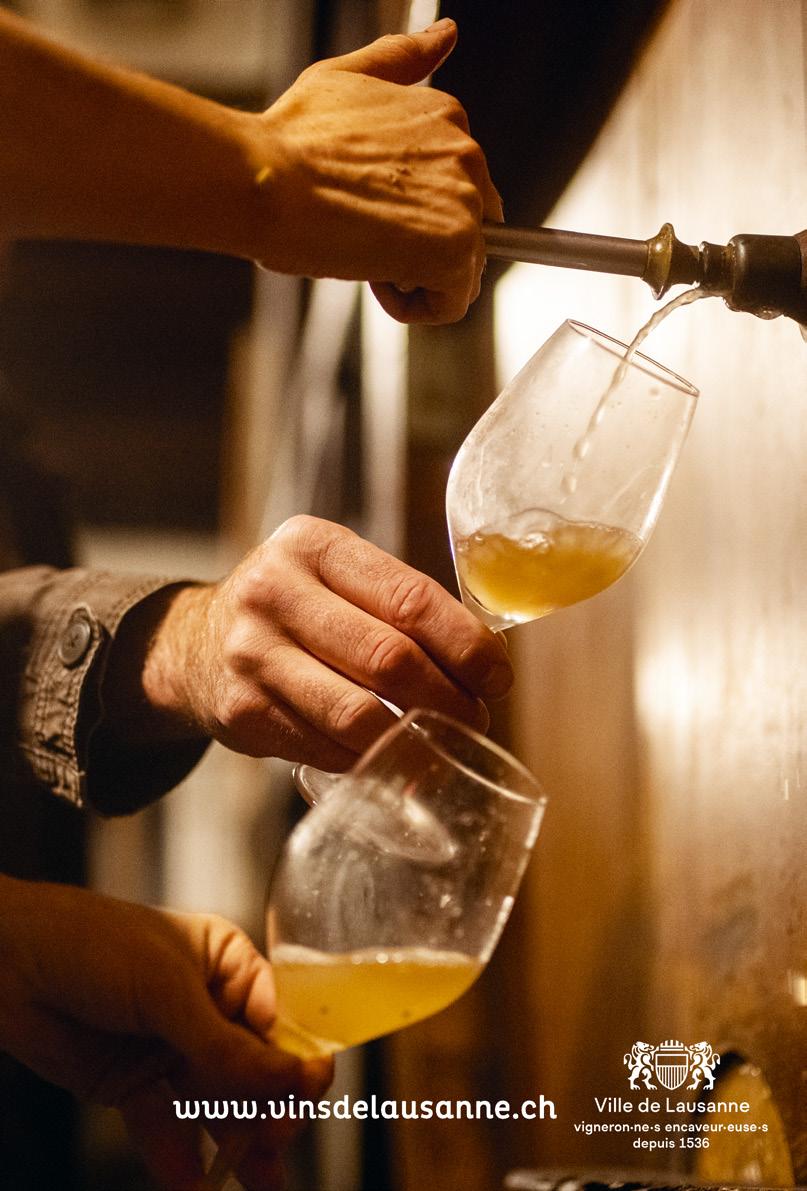
North of the town, vast expanses of forest, representing 40% of the municipal surface area, offer many opportunities for walks and outdoor sports activities.
At an altitude of 873 m, Le Chalet-à-Gobet is the culminating point of the Lausanne urban area, 500 m above Lake Geneva. Sauvabelin’s bucolic setting, with its lake, park and tower, will delight you.
This innovative architectural complex, easily reached by metro, integrates the largest freshwater aquarium in Europe and the Lausanne Vivarium. Follow the discovery
trail that includes 50 tanks displaying about 20 aquatic ecosystems from across the five continents.
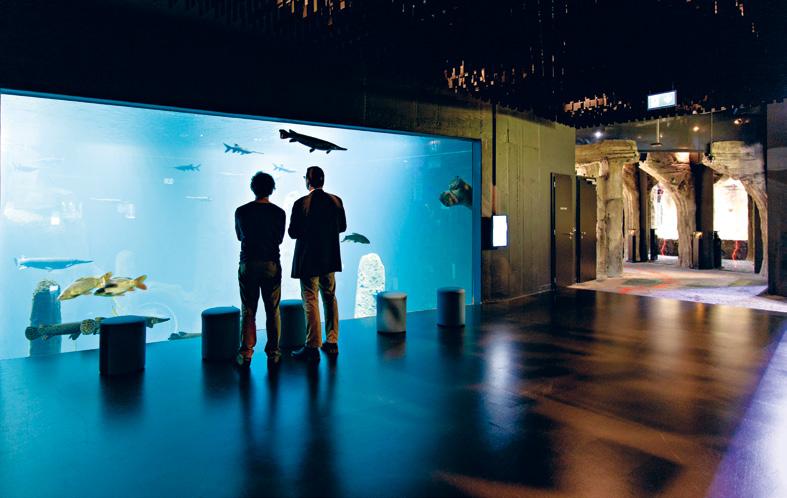
Between vineyards, lake and mountains, live the experience of Swiss hospitality on the shores of Geneva Lake.
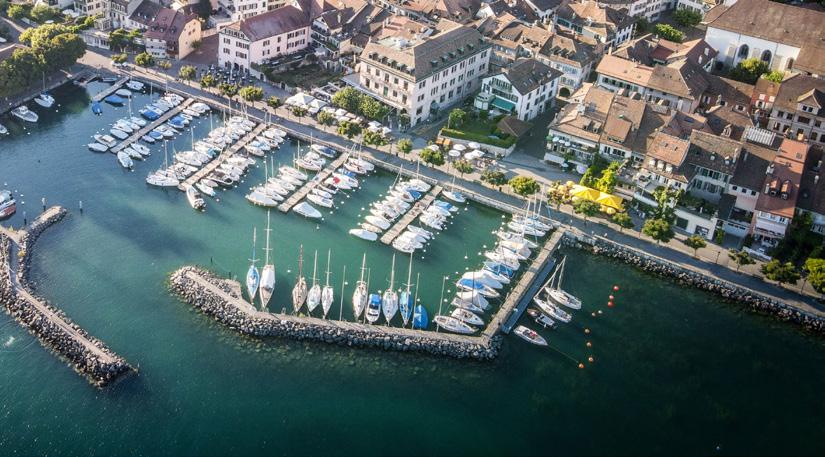
Conseil de direction Expertises Evaluations d’entreprises Conseils et services fiscaux Gestion fiduciaire et administration de sociétés Conseils et services juridiques
Révision
Révision de comptes des collectivités publiques Gestion financière et comptable Comptabilité et gestion des salaires
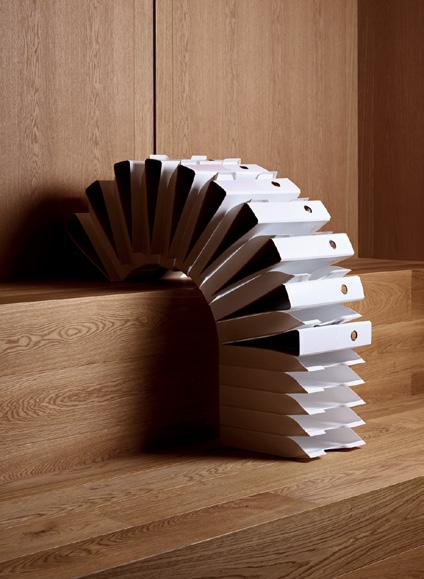
This village includes a hotel school, a ski slope, an equestrian centre as well as a golf course. Its sports centre offers running and mountainbike trails (changing showers available).
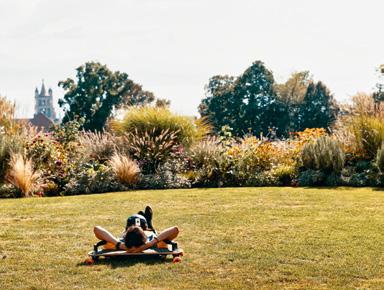
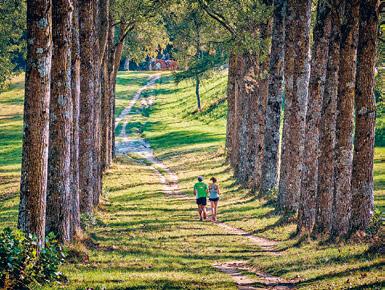
In the centre of the Hermitage Estate sits an imposing mansion built around 1850 and which today houses a famous museum of paintings. In the English-style gardens populated with majestic trees, benches invite you to contemplate a unique panorama of the old town, the lake and the mountains.
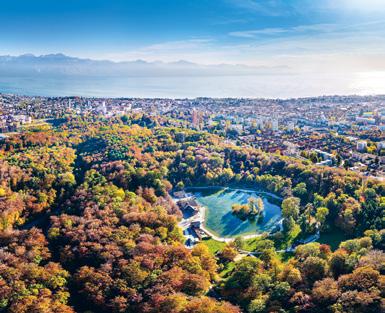
Created in 1888 in the heart of an oak forest, the Sauvabelin lake rapidly became a soughtafter strolling area for Lausanne people. You can rent a small boat during the summer or walk along its shores. The surrounding park is very popular with children, who discover unusual animals such as woolly pigs, grey cows, booted goats and mirror sheep.
This tower built of solid, local wood in a spirit of environmental respect is one of the many destinations for a hike above the town since 2003. Enjoy the 360° view from a height of 35 metres after climbing the 151 steps of its double spiral staircase. Free access.
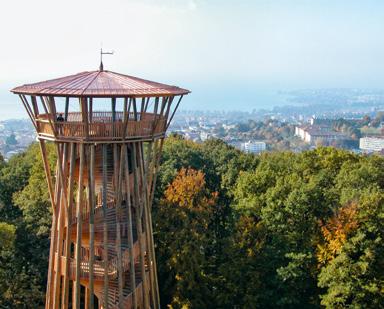 SAUVABELIN PARK & LAKE
SAUVABELIN PARK & LAKE
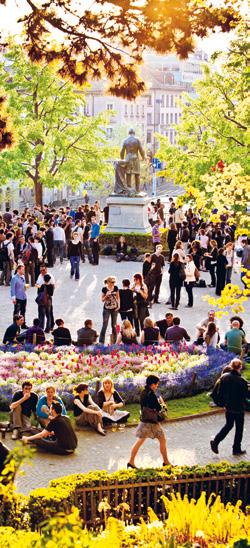

Two Tourist Office information and welcome centres are at your service at the CFF train station ans the Cathedral. You will find a host of services at your disposal there – public transport passes, maps, recommended routes and excursions from Lausanne, various brochures, lists of hotels, help and emergency services, etc. – as well as culture and leisure news.
LAUSANNE TRAIN STATION
Pl. de la Gare 9 CFF train station main hall
LAUSANNE CONVENTION BUREAU
Administration Av. de Rhodanie 2 Case postale 975 CH-1001 Lausanne +41 21 613 73 73 www.lausanne-tourisme.ch/en/ info@lausanne-tourisme.ch
Find out the opening hours of the two information offices on: www.lausanne-tourisme.ch/ tourism-offices
Information point for the town of Lausanne, the “info cité” office’s mission is to inform, orient and guide Lausanne people and passing guests. Place de la Palud 2 1002 Lausanne Monday to Friday: 8 am → 5 pm +41 21 315 25 55 www.lausanne.ch/infocite infocite@lausanne.ch
Here are useful contact details to keep at hand and make your stay easier. You have access to all the necessary information at our two information offices at the CFF train station and the Cathedral.
EMERGENCY
LAUSANNE POLICE STATION Pl. de la Riponne 10 +41 21 315 33 85
Information by telephone only in the morning Monday to Friday (except wednesday): 1 pm → 4 pm www.lausanne.ch/en

Find here the applications that are useful for your stay in Lausanne. Calendar, hotels, self-service bike rentals, public transport and much more!
CURRENCY Swiss franc (CHF) 1 euro = 1 Swiss Franc (indicative rate)
EXCHANGE OFFICE
Lausanne train station
Monday to Friday: 8 am → 6.30 pm; Saturday: 9 am → 6 pm; Sunday: 10 am → 6 pm
IN THE TOWN CENTRE Pl. Saint-François 15 +41 848 888 888
Monday to Friday: 7.30 am → 6.30 pm; Saturday: 8 am → 11.30 am
AT THE TRAIN STATION Pl. de la Gare 1/Av. de la Gare 43 bis +41 848 888 888
Monday to Friday: 8 am → 6.30 pm; Saturday: 9am → 4 pm; Sunday: 4 pm → 7 pm www.poste.ch/en
MORE INFORMATION AT: www.lausanne-tourisme.ch/en/mobile-apps
Situated in the heart of Europe, the Olympic Capital is also the ideal departure point for exploring the charming lake, mountains, countryside, vineyards and forests of the surrounding area.
PUBLIC TRANSPORT IN THE LAUSANNE REGION
The “ tl_live” application lets you purchase your ticket, look up itineraries and real-time schedules (in French only).

FLON CUSTOMER CENTRE
Pl. de l’Europe 5b +41 21 621 01 11
Monday to Friday: 7 am → 7 pm; Saturday: 9 am → 6 pm www.t-l.ch/en
You can reach Lausanne across land, air or even water. This model town for sustainable development possesses a network of public transport that makes it ideal to set off from and explore.
ww w l a u s a nn e t o u r is m e. c h / l t c
Don’t forget to ask the establishment providing your lodging for your personal Lausanne Transport Card (LTC)! You can use public transport (bus, train, metro) as you please during your whole stay (maximum 15 days) in Lausanne and its surroundings. But that’s not all! Thanks to our partners, you benefit from exceptional discounts and advantages from many museums, shops and other leisure activity providers.
“GRAND
Full fare: CHF 9.30; reduced fare: CHF 6.90. This pass entitles you to whole-day-use of all the public transport companies belonging to the Vaud tariff community present in the Grand Lausanne perimeter (i.e. Lausanne and its immediate surroundings).
Available from ticket dispensers or points of sale. For more information, see: www.mobilis-vaud.ch
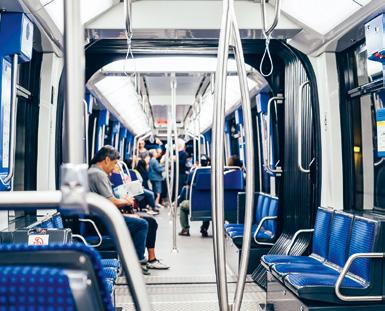
Consulting the timetables for national or international connections from or to Lausanne, preparing your trip and buying tickets to travel in Switzerland becomes child’s play with “ Mobile CFF ” application.
CFF information – Passenger service: Pl. de la Gare 5a +41 848 44 66 88 (within Switzerland) www.sbb.ch/en
From the simple lake crossing to go to France to a gourmet cruise on a Belle Époque paddle-wheel vessel, every experience on the Lake Geneva waters becomes an unforgettable memory. Av. de Rhodanie 17 +41 848 811 848 www.cgn.ch/en
LEB RAILWAY
Would you like to spend a day in the countryside? Embark on the Lausanne – Echallens – Bercher train that departs from the Flon. Bikes and pushchairs are welcome on board. Gare Lausanne-Chauderon +41 21 621 01 11 www.leb.ch
GENEVA INTERNATIONAL AIRPORT
Second in Switzerland after Zurich, Geneva Airport is a 45-minute train ride from Lausanne. It benefits from a network serving 142 direct destinations, 23 of which are intercontinental. Rte. de l’Aéroport 21, Grand-Saconnex +41 848 19 20 20 (information about departures and arrivals) www.gva.ch/en
This aeronautical facility – that celebrated its hundredth year in 2016 – is located nearby Lausanne’s town centre. First flights and air-taxis. Av. du Grey 117 +41 21 646 15 51 www.lausanne-airport.ch
You will find all the information on the offers and the networks to Lausanne-Morges on the PubliBike site. +41 32 501 40 16 www.publibike.ch/en/publibike


www.lausanne-tourisme.ch/en/getting-around-in-lausanne
Would you like to stay at a centrally located, low-priced establishment after enjoying Lausanne’s nightlife, or do you dream of spending the night in a 5-star hotel overlooking the lake? Do you need a comfortable room near the EPFL congress centre? How about a hotel with seminar rooms and high-tech facilities? Or do you imagine a romantic weekend in a boutique hotel? With more than 7,000 beds from 1- to 5-star superior spread over 60 or so establishments, the city of Lausanne allows all its guests to be put up in the best conditions, whether they are here on business or for leisure.
MORE INFORMATION AT: www.lausanne-tourisme.ch/hotels (for hotel bookings)

With this unique ticket valid for one, two or three days, discover the most popular attractions & highlights in Lausanne and the region at an exceptional price.
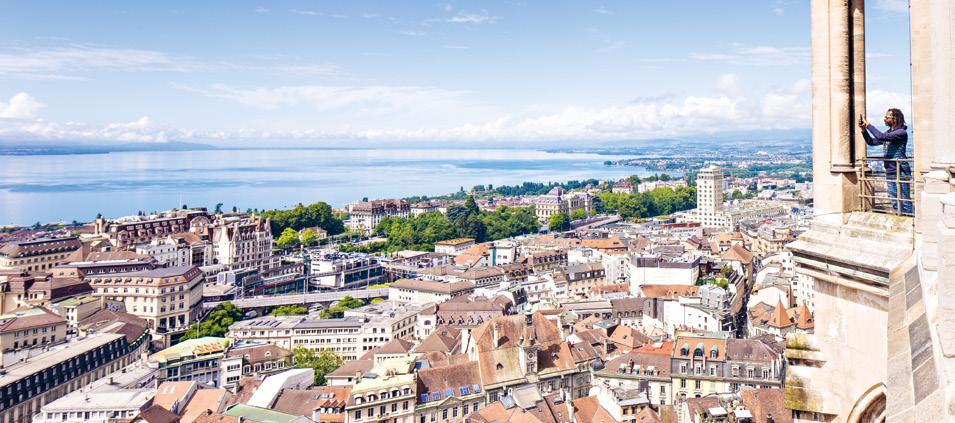
Discover The Olympic Museum, the Vaud Museum of Fine Arts, AQUATIS Aquarium-Vivarium, the Collection de l’Art Brut,... and much more! Take advantage of your stay to discover the very-interactive Chaplin’s World or the unique view of Glacier 3000, both easily accessible by train from Lausanne.
www.lausanne-tourisme.ch/en/city-pass
Discover the hidden treasures of Lausanne with Detective Blaireau and solve the riddles to find the code that will open the treasure chest. Come and pick up your map at the train station visitor center.
www.lausanne-tourisme.ch/ en/offer/detective-trail/
To entertain your children while you visit the town, Lausanne Tourisme offers them a Travel Journal packed with fun and creative activities.
Come and pick up a Travel Journal for each of your children aged 5 to 12 in one of our tourist information offices.
www.lausanne-tourisme.ch/en/travel-journal
www.lausanne-tourisme.ch/en/special-offers
Information offices: Train station, Cathedral +41 21 613 73 73
info@lausanne-tourisme.ch

Discover the diversity of Lausanne and its surrounding area in the company of experienced and multilingual guides. Benefit from their knowledge as you enjoy a fun and enriching visit of the city. Many activities and guided tours. In partnership with: www.visitelausanne.ch/en
The City of Lausanne puts on various activities for those on a modest budget. Here are a few examples of outings to be enjoyed as a family or among friends.
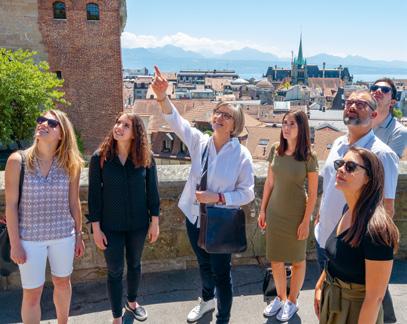
• Vidy Bowl for skaters
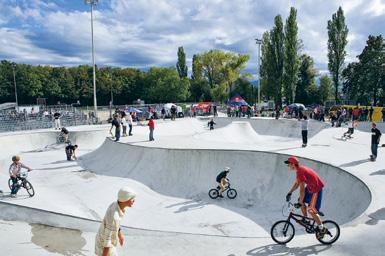
• Many multi-coloured birds at the Mon-Repos Park aviary
• Free entry to most museums on the first Saturday of the month
• Mountain biking at Chalet-à-Gobet
• Climbing the Sauvabelin Tower
BETWEEN CHF 0 AND CHF 8.50
• Climbing the Cathedral tower (from CHF 1 to CHF 5)
• Flon bowling alley (between CHF 5.50 and CHF 9 per person)
• Bellerive minigolf (free up to age 4, CHF 6 until age 16, then CHF 8)
• Vidy miniature train (CHF 3 per journey)
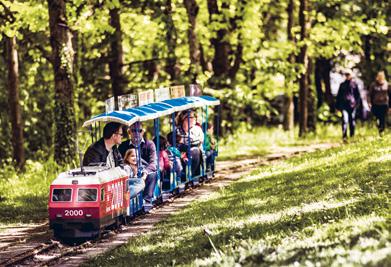
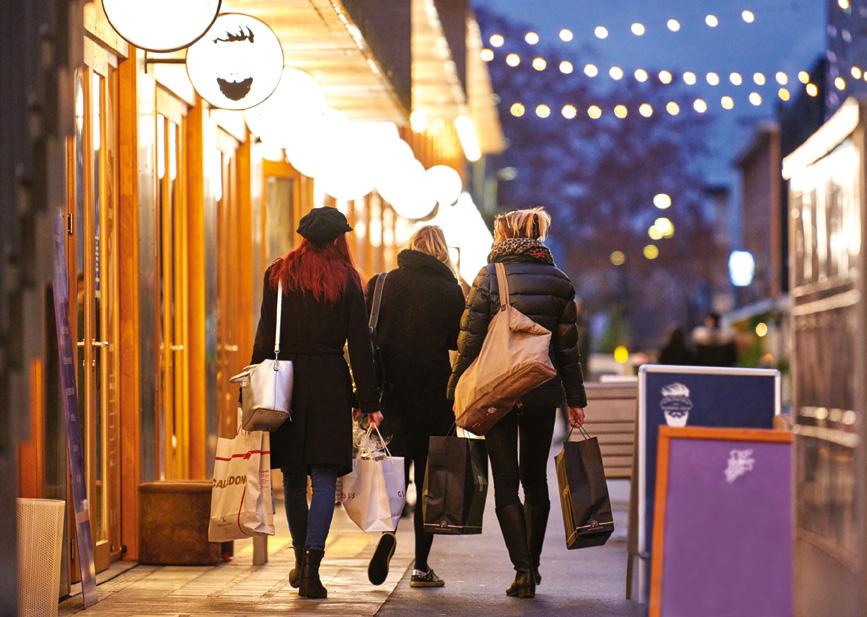
Rue de Bourg 1, 1003 Lausanne
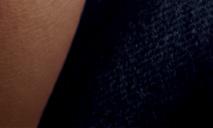
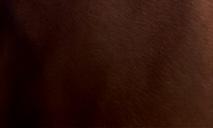
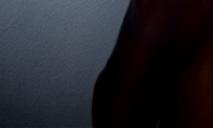
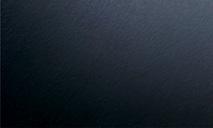
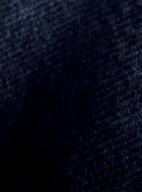
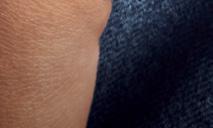

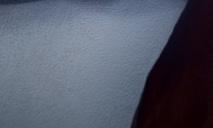
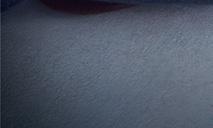
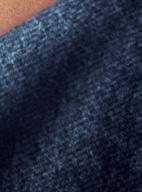
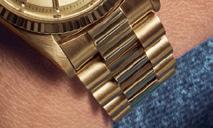
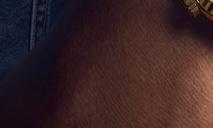
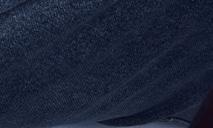
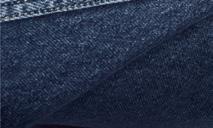
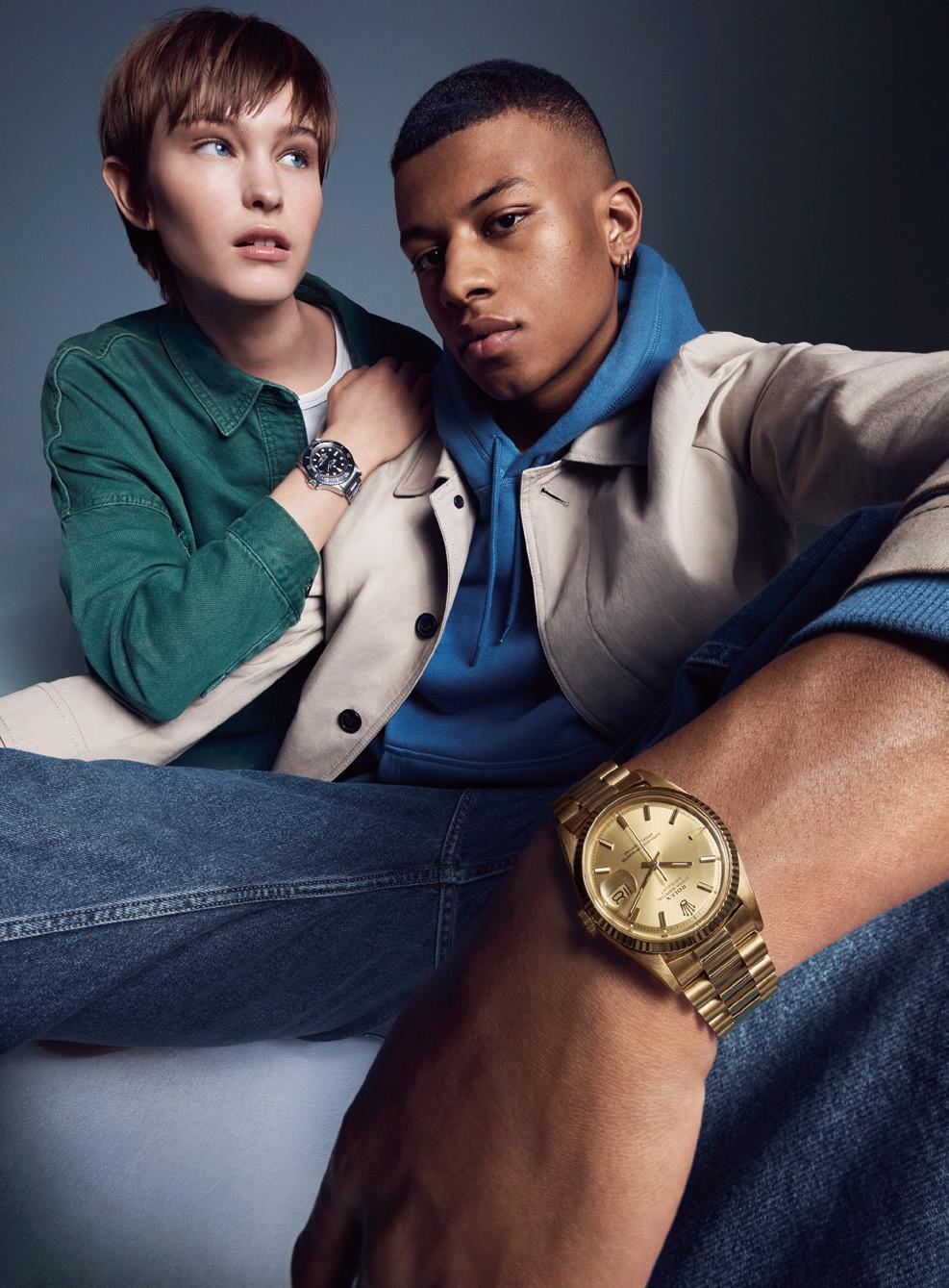 AUTHENTICATED BY EXPERTS • TWO YEAR GUARANTEE • BUY , SELL & TRADE
AUTHENTICATED BY EXPERTS • TWO YEAR GUARANTEE • BUY , SELL & TRADE